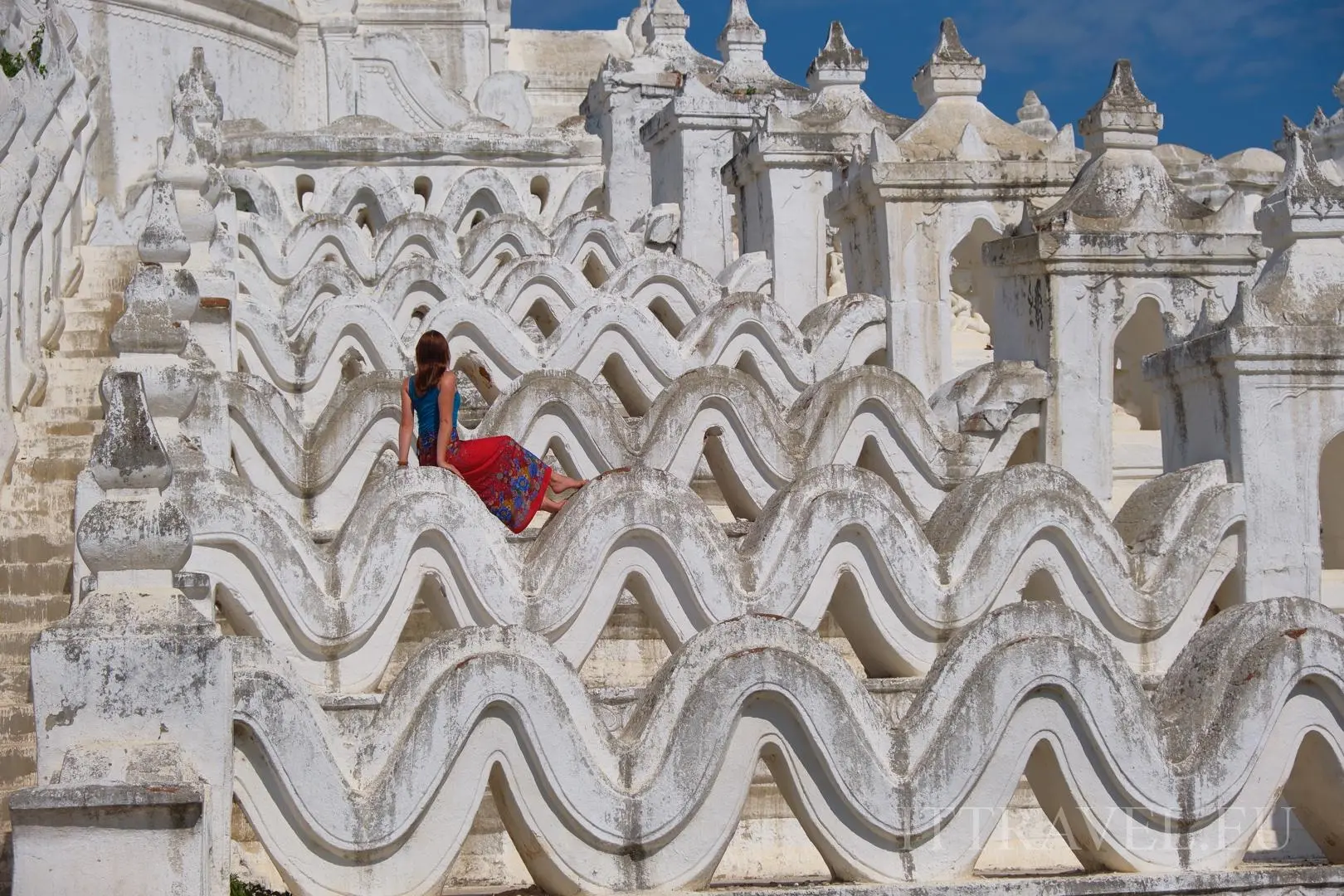
Mandalay - what to see
From Poland it's still difficult to find reasonably priced airline connection to Myanmar. We flew to Mandalay (second largest city, and also last capital city of royal Burma) from Bangkok using Bangkok Airways. After two hours of comfortable flight we had surprise - our plane was the only one that recently landed - moreover it's the only plane on whole airport! During our passport control there were moments of power blackout! Nobody from airport crew was surprised, later we found out that country has huge problems with regular power access and such situations happens everywhere and everyday.
We order Grab (local Uber) and here another surprise, in the country traffic drives on the right, but our driver also sits on the right . Later we find out that Myanmar tried to cut off from the colonial past. In 1970 - 22 years after regaining independence from Great Britain they changed side on which cars drives. Unfortunately Myanmar is surrounded by other countries that drive on left side, from where most of cars are imported.
Mandalay seems to be smaller than it actually is - low buildings and wide sandy streets - feels more like middle east than modern Asia. City is very loud - all the time you can hear honking and street noises, that do not fade away until the middle of the night. City center looks pretty decent, but in the suburbs it's possible to see huge scale of poverty - many people live in bamboo huts next to main roads going outside of the town.
For us the easiest way to get around was bicycle - on foot distances are too big, and public transport doesn't really exists. It's possible to rent a car with driver, but we like to be independent. Despite appearances in the city center it was pretty easy to ride. However to get to points further away bicycle is not enought. It's posible to book an organised trip or hire driver for whole day. For more courageous people we can suggest scooter, as traffic on outskirts is way more chaotic (during whole day we've seen only one other tourist using motorbike).
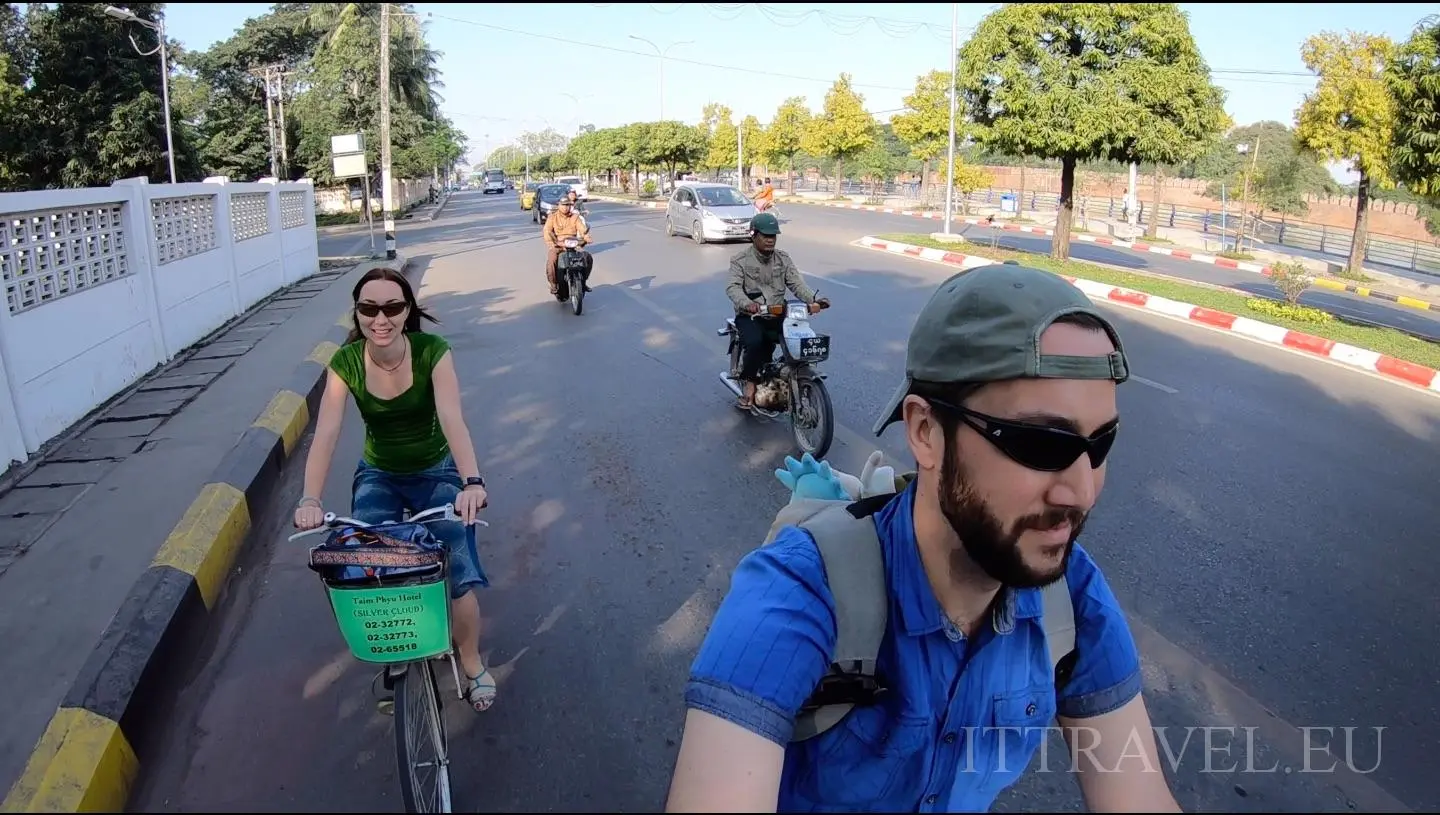
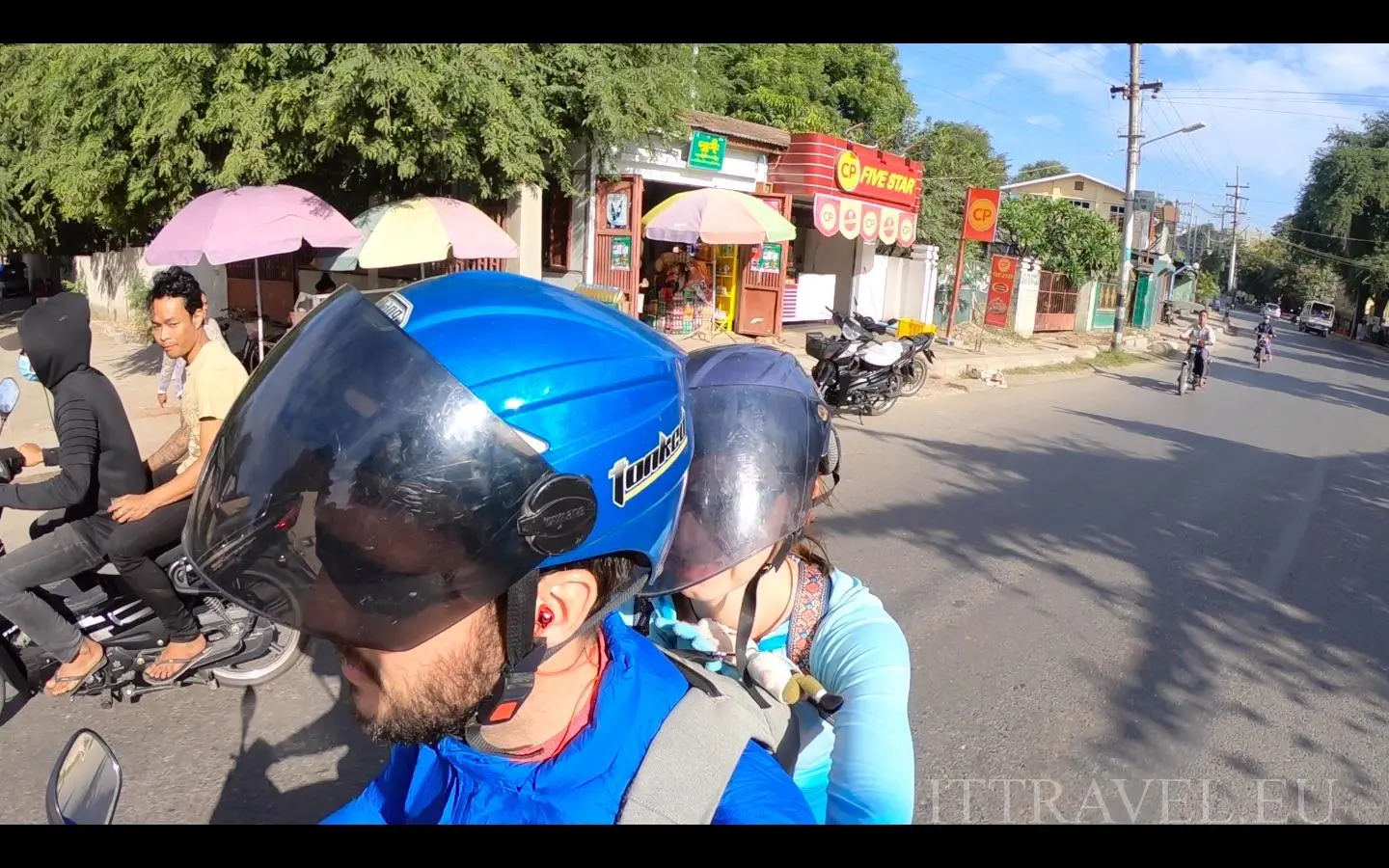
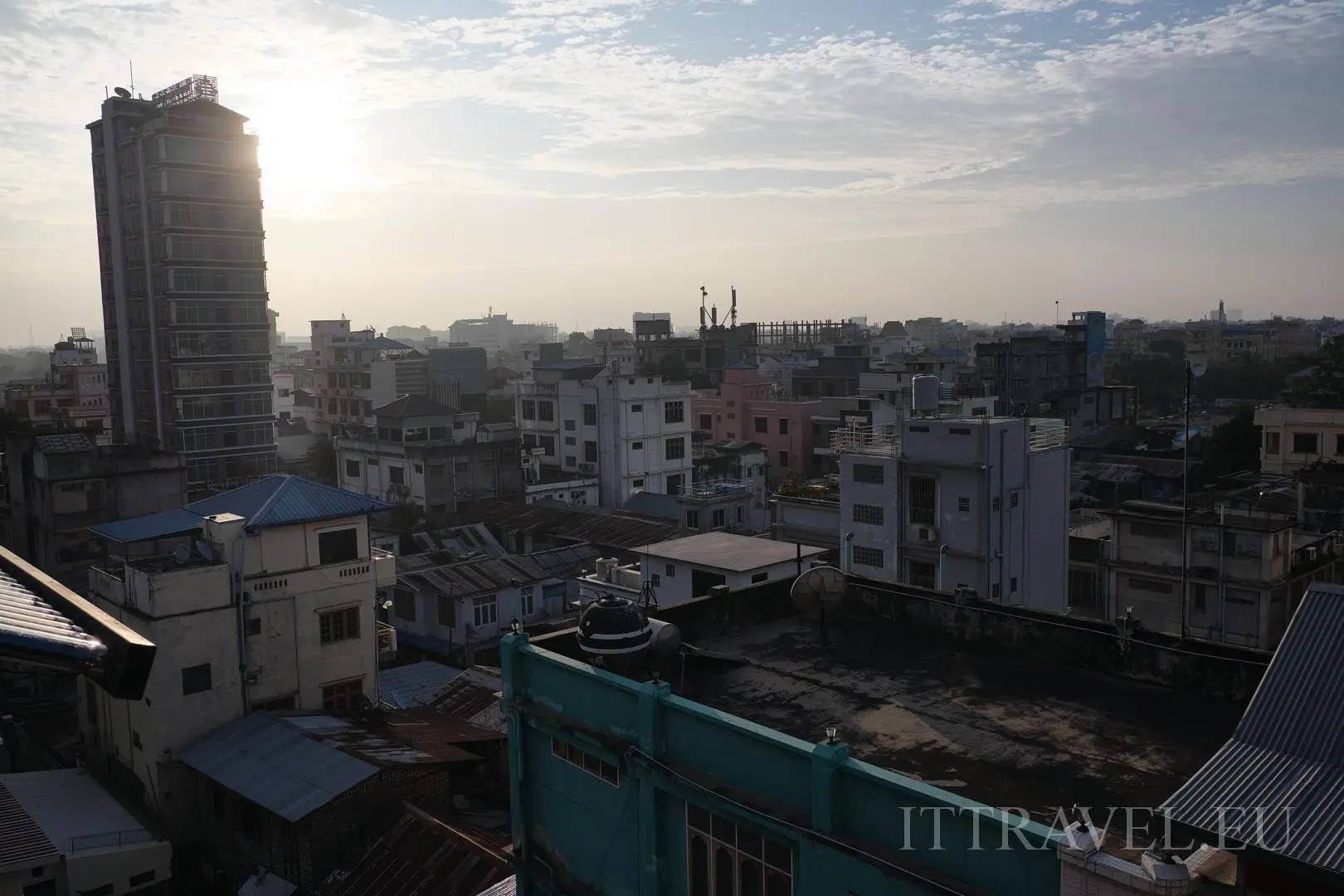
Sightseeing the city
To calmly see everything you need at least 3 days. One for northern part, one for southern, and one for suburbs. We didn't plan it properly, so we had to run a lot. Most of interesting objects in the city belongs to local historic zone and ticket costs 10000 Kyats (6 EUR) per person - keep it after buying!
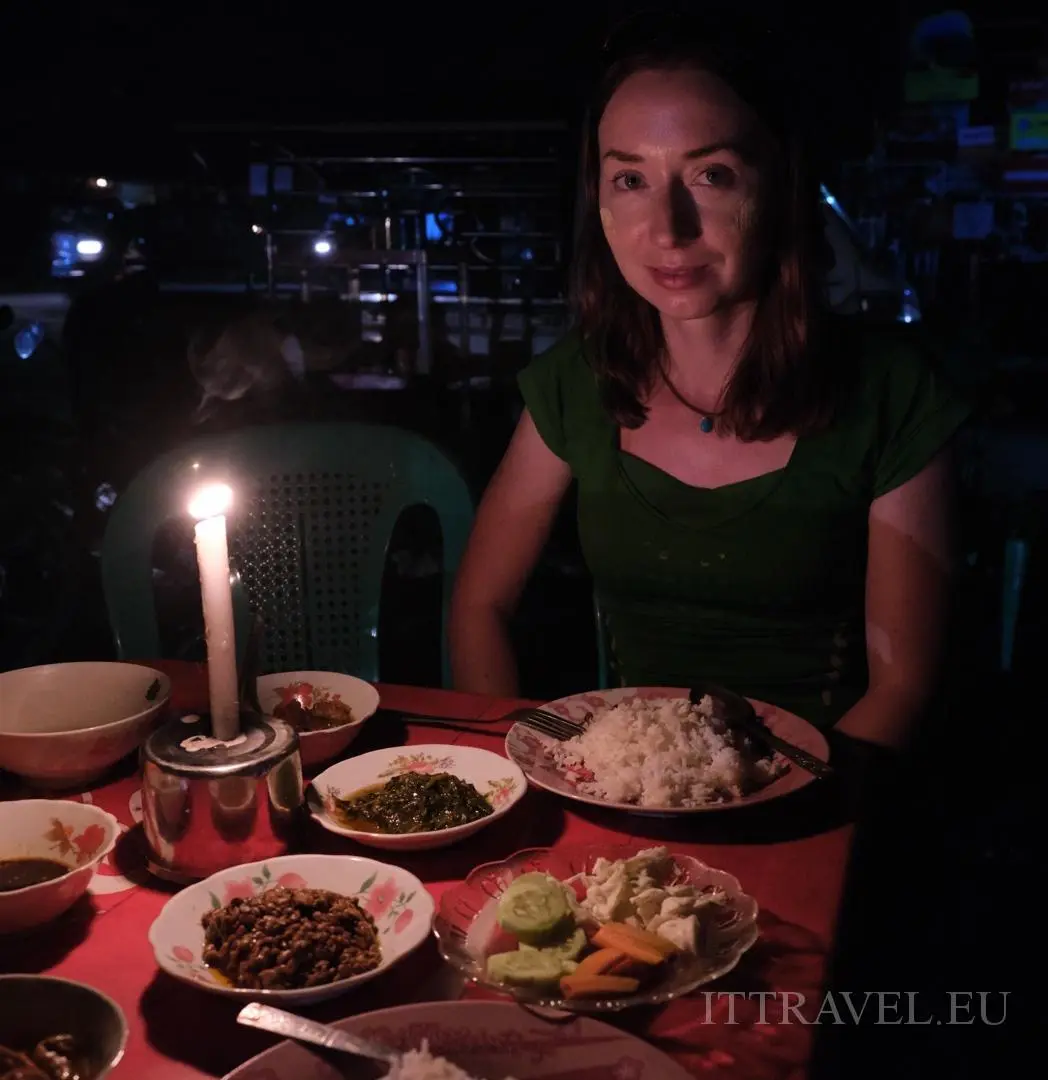
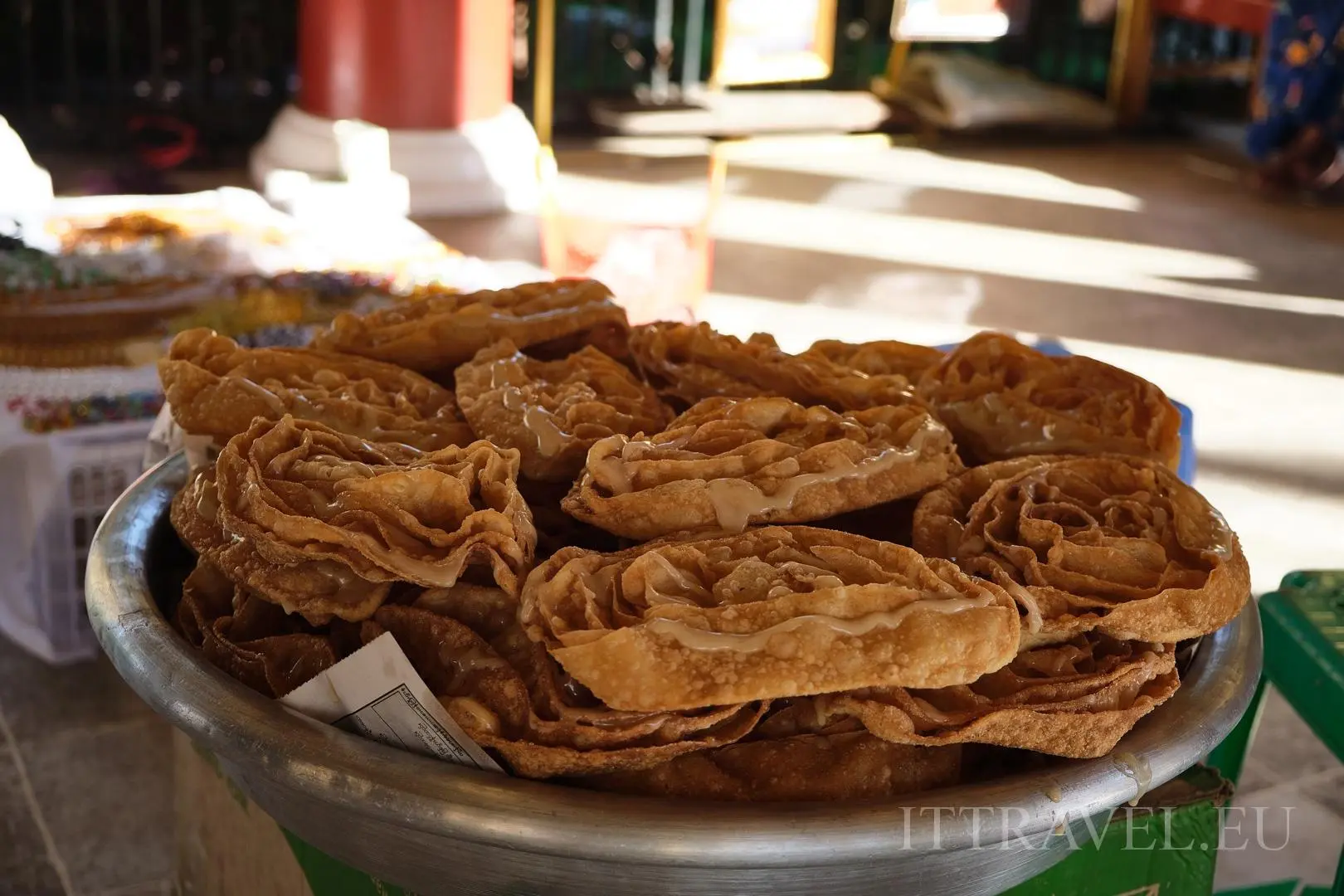
Royal Palace
Belonged to last royal family of Burma. Building was ordered by King Mindon, and it lasted between 1857 to 1859. Most of palace was transported using elephants from former capital city - Amayabuya - nowadays suburbs of Mandalay. New city has been built on a square plan and surrounded by walls and moat - 2 km on each side. Palace served last King Thibaw till 28th November 1885, when during 3rd Anglo-Burmese War king surrendered, and palace was renamed to Fort Dufferin in honor of vice king of India (Burma was incorporated into this country). Since then troops were based there. British invaders plundered the palace and burnt the royal library. The royal insignia were returned to independent Burma in 1964.
After the expulsion of the King, in order to maintain their power, the British committed many crimes - the destruction of villages and property of the inhabitants, and in the end mass executions. During World War II, the palace was captured by the Japanese, and then a large part of the palace was destroyed as a result of Allied bombings, only the royal mint and watchtower were preserved. In 1990, the palace was rebuilt, unfortunately using modern materials - like concrete or corrugated metal. Currently, it is still a military area and sightseeing takes place through the entrance on the eastern side. There are military families living in the area between the gate and the courtyard of the palace, tourists can't photograph this part, and are not allowed to leave the main road.
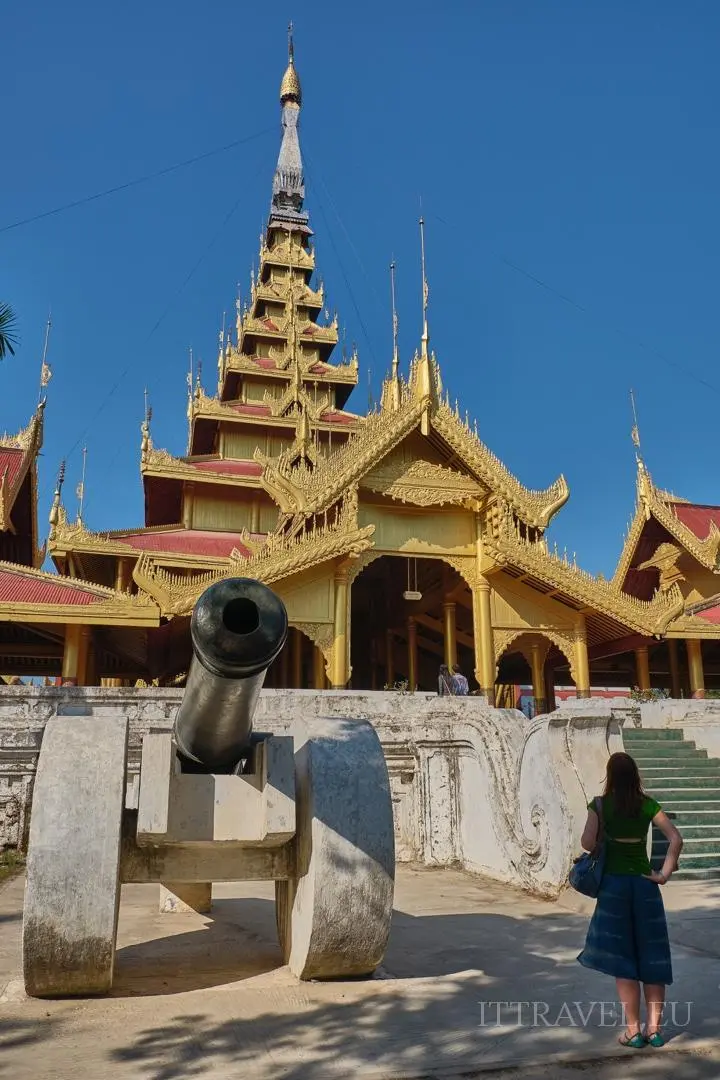
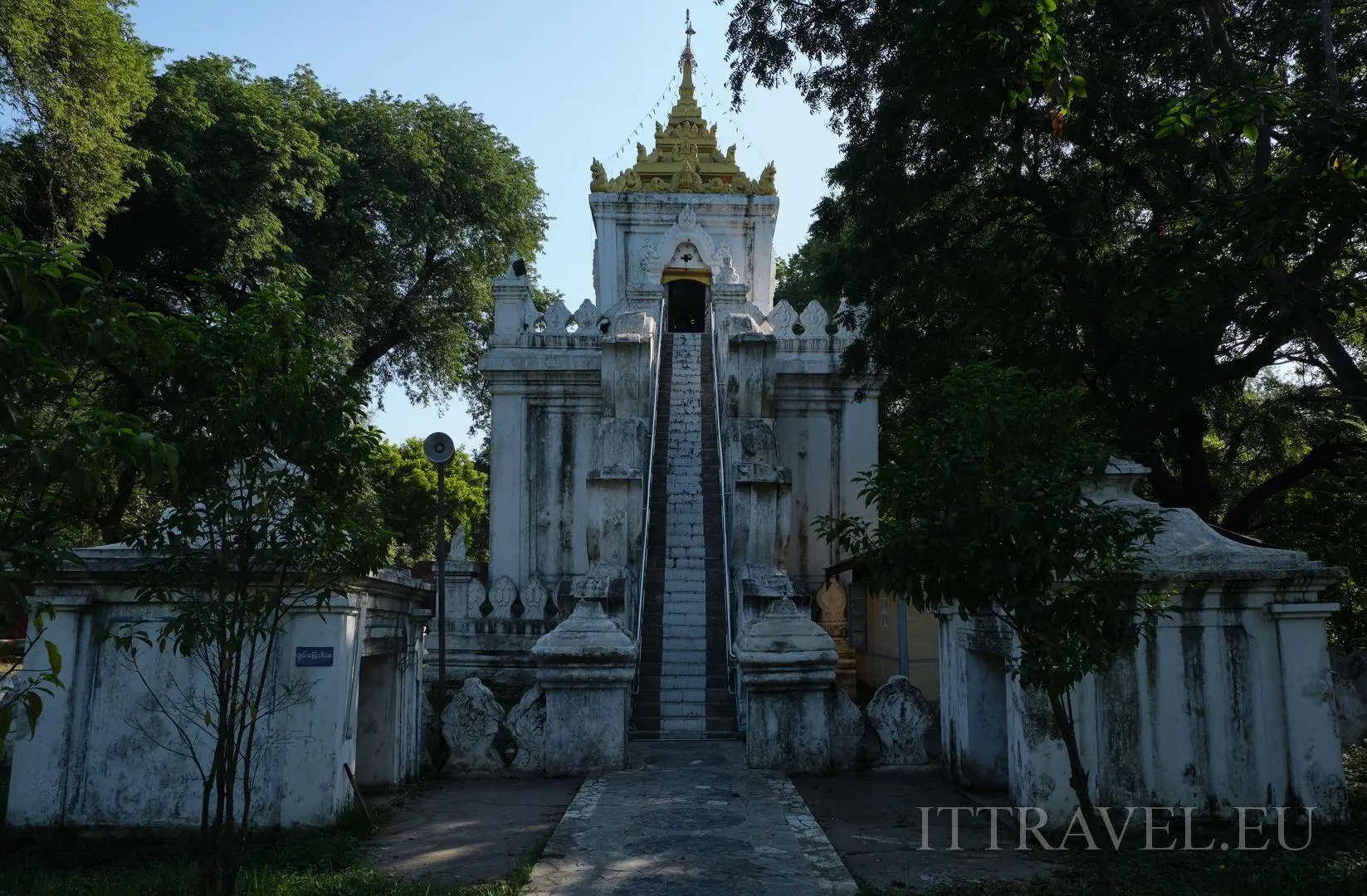

Admission to the palace is free for Burmese and they like to sit in its area, sometimes the tourists themselves are an additional attraction for them
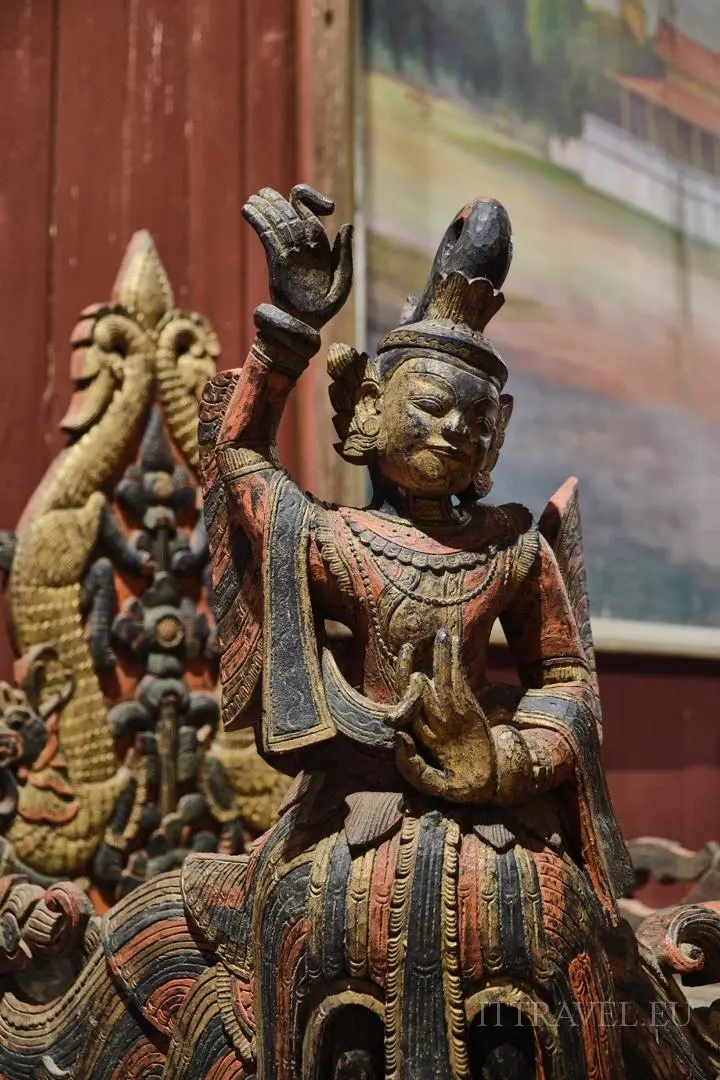
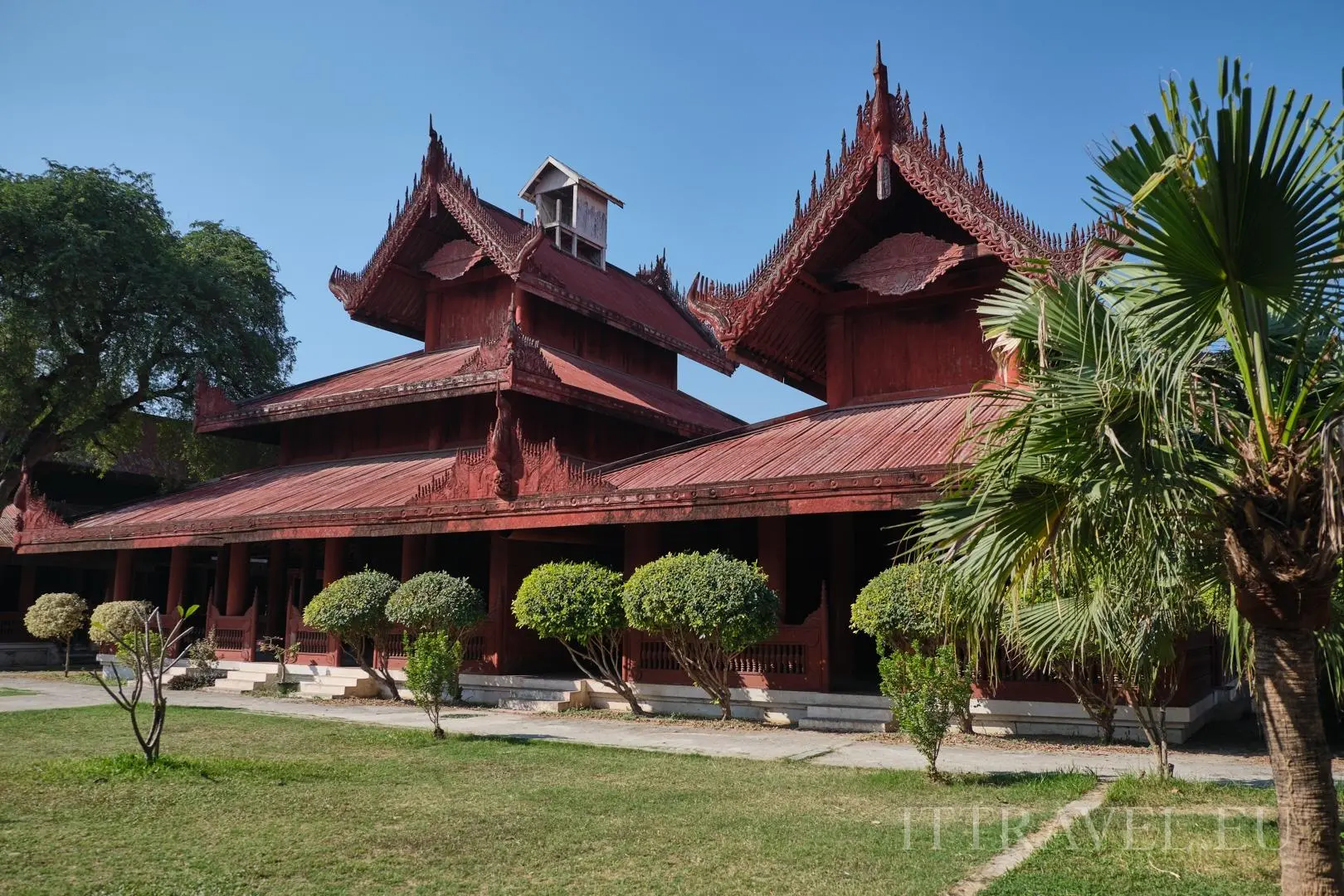
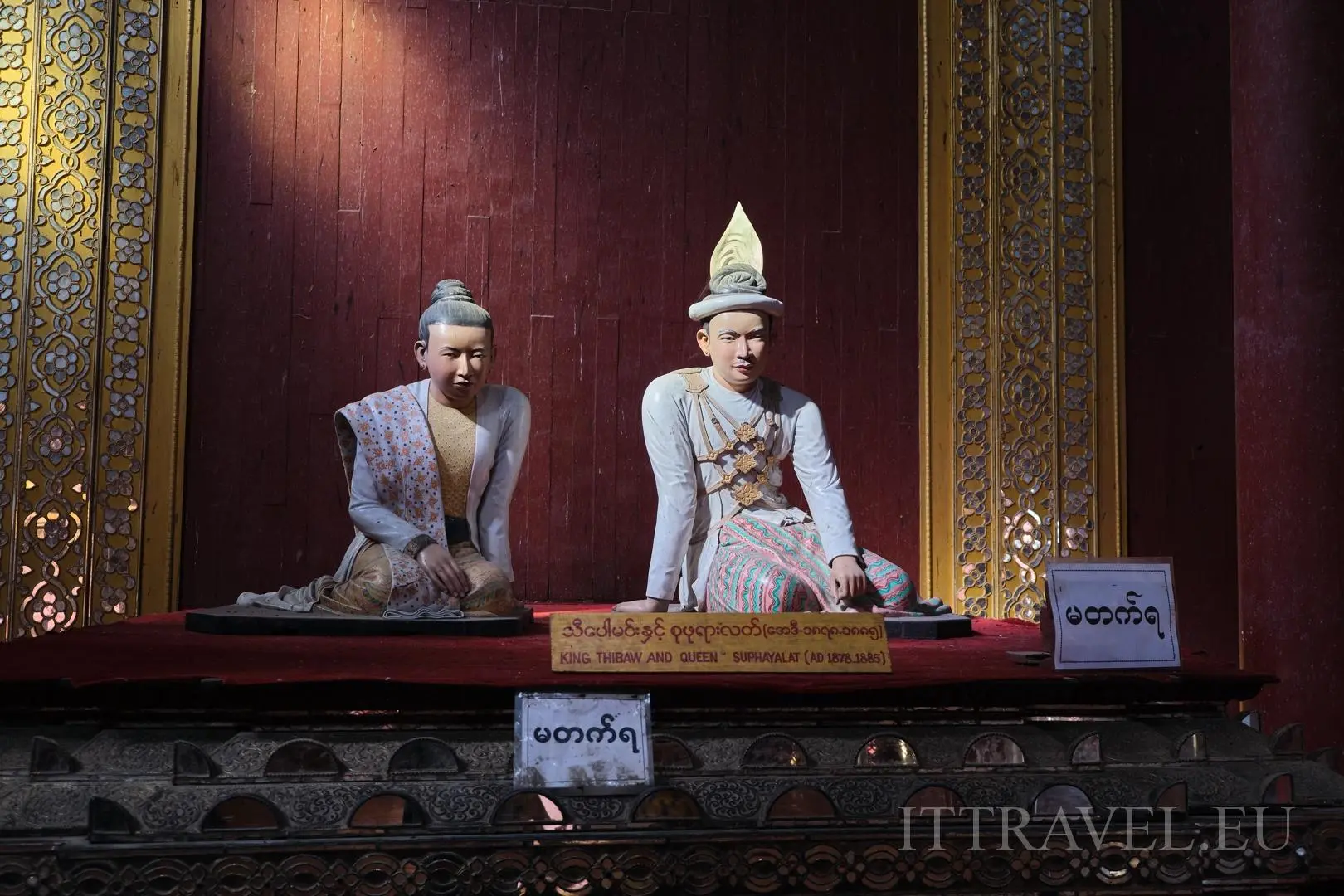
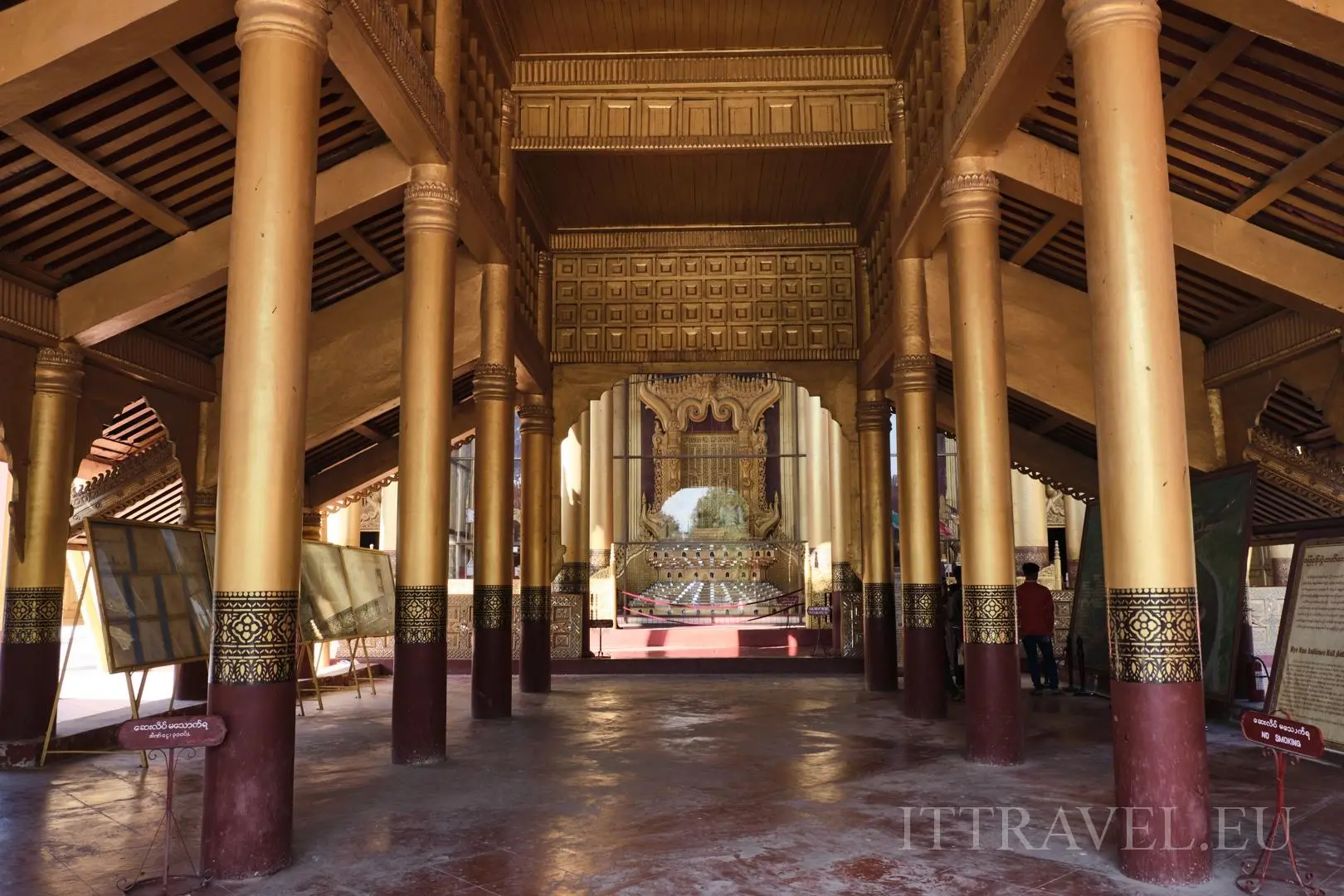
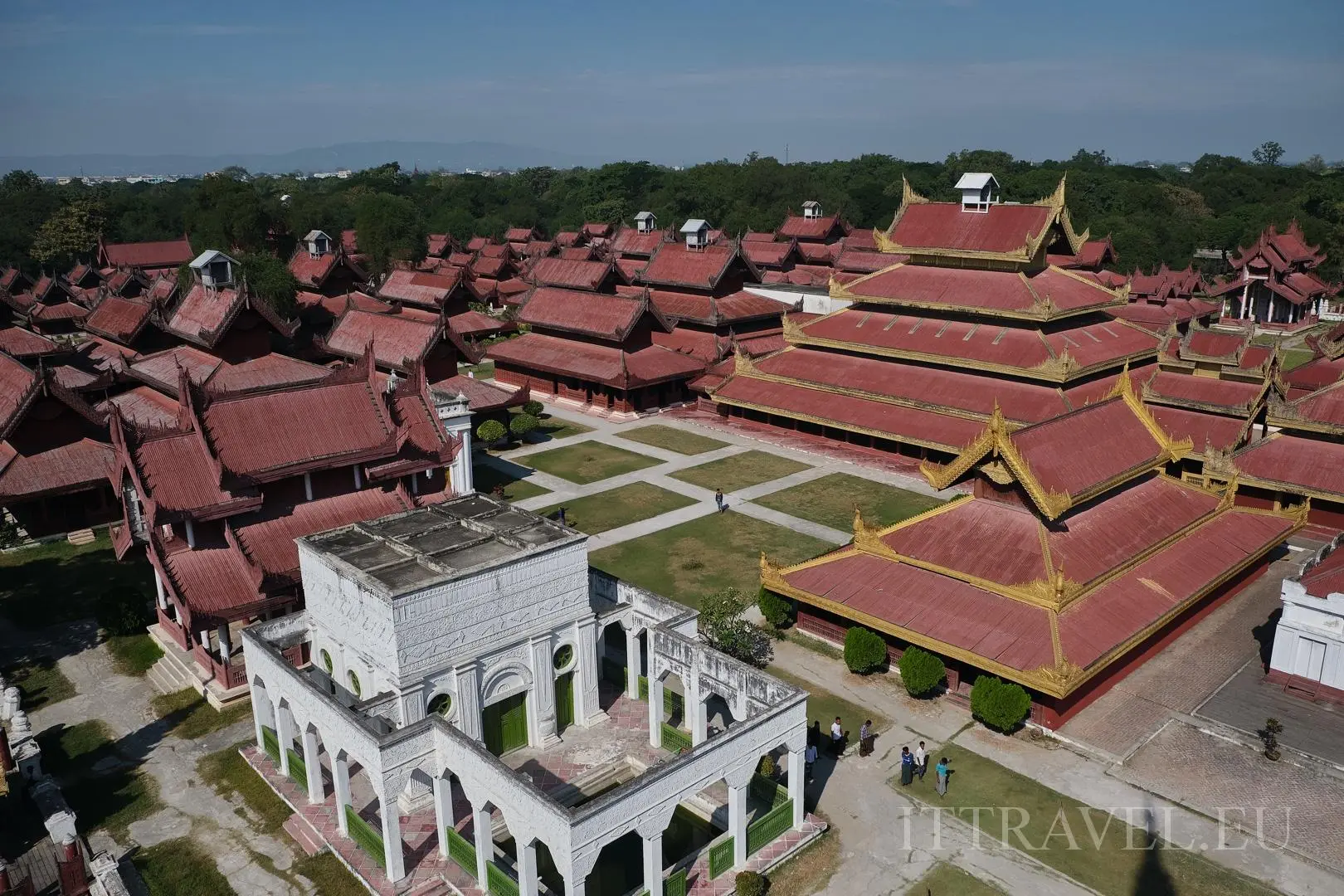
Vihara Shwenandaw
The Buddhist monastery originally built as a part of the Amayabuya palace. After moving the palace to Mandalay, King Mindon used it as a living room. After the death of the king, his son Thibaw believed that the building is haunted by the ghost of the former owner. Therefore, in 1878, he ordered to dismantle the building and moved from the palace grounds to its present location. It was turned into a monastery a year later. King Thibaw dedicated Vihara to memory of his father and he was coming to meditate there.
Thanks to the fact that the monastery was away from the main palace, it is now only part preserved in original. While admiring its carved walls (depicting Buddhist myths), we can only imagine what the rest of the palace looked like.
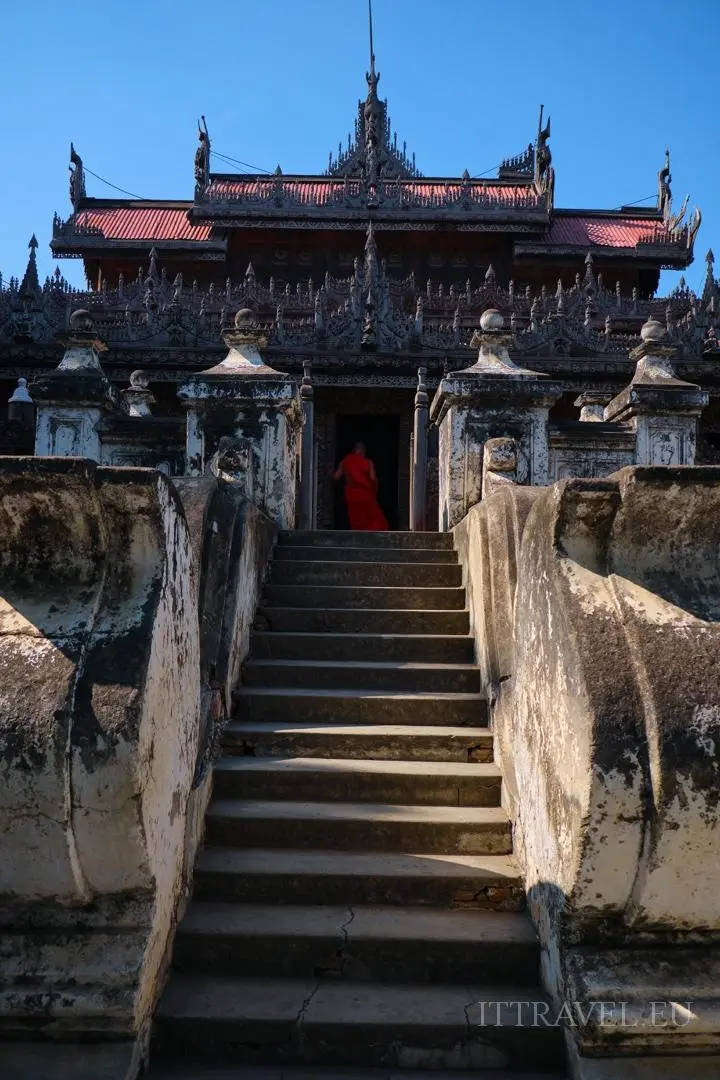
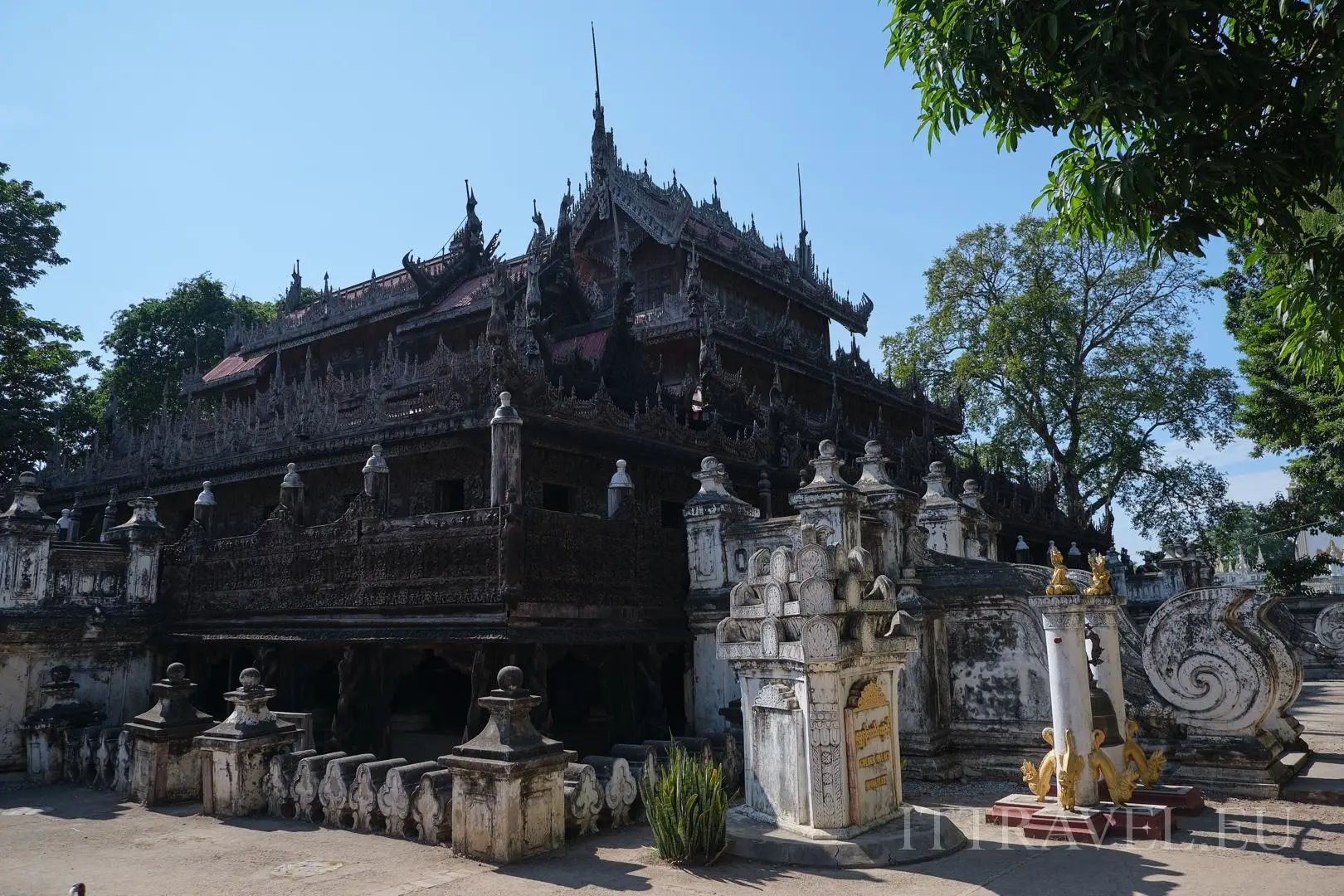
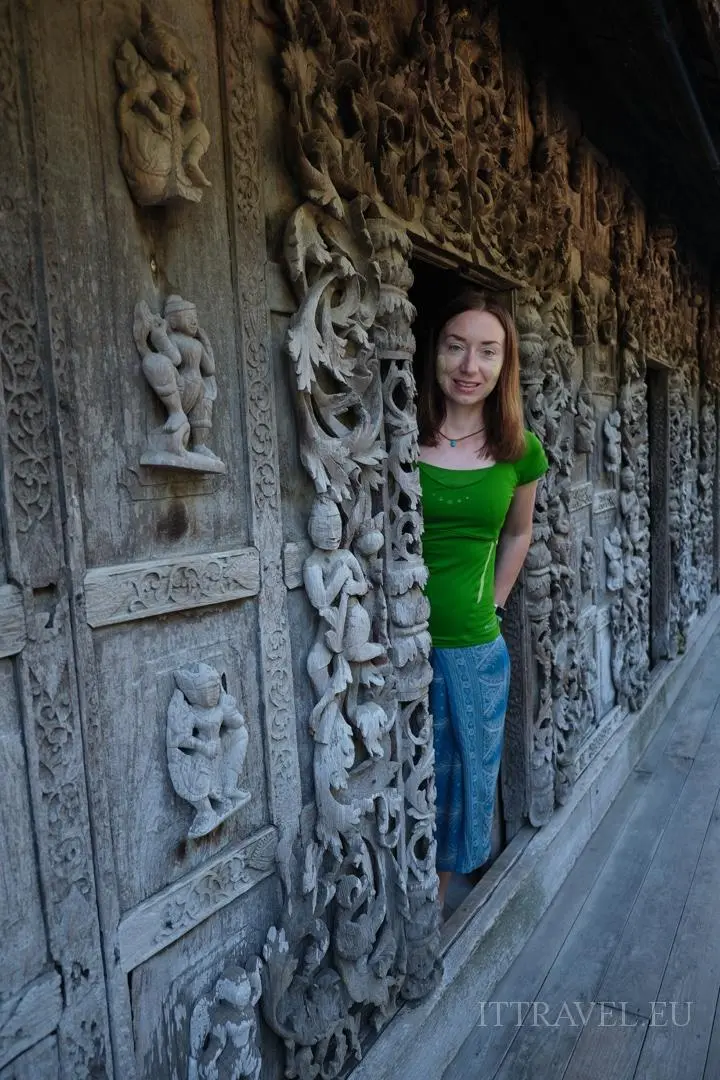
As with most tourist places along the way are various stalls with trinkets. Normally we probably would not look, but we were trapped by two young girls who first offered to paint our faces (supposedly for free) with Thanaka and then very gladly invited us to shop at their booth. Such a Burmese marketing gimmick, which we have met many times: I will do you a favor, and now you do me and buy something from me. We do not like licks and we suspected that this would end this way, but we wanted to take the opportunity. The girls spoke decent English and they could be asked about various aspects of local life and culture. Eventually, we decided to support the local business women 😉
And what is Thanaka?
This light yellow paste is made of powdered bark of a local tree. Women, children, and sometimes also men paint their faces and arms to protect against the sun. It is often applied in the form of bright spots, but there are also decorative leaves or flowers. Apparently, it also deters mosquitoes, helps get rid of acne and has a beneficial effect on the skin. The Burmese people have been using Thanaka for almost 2000 years!
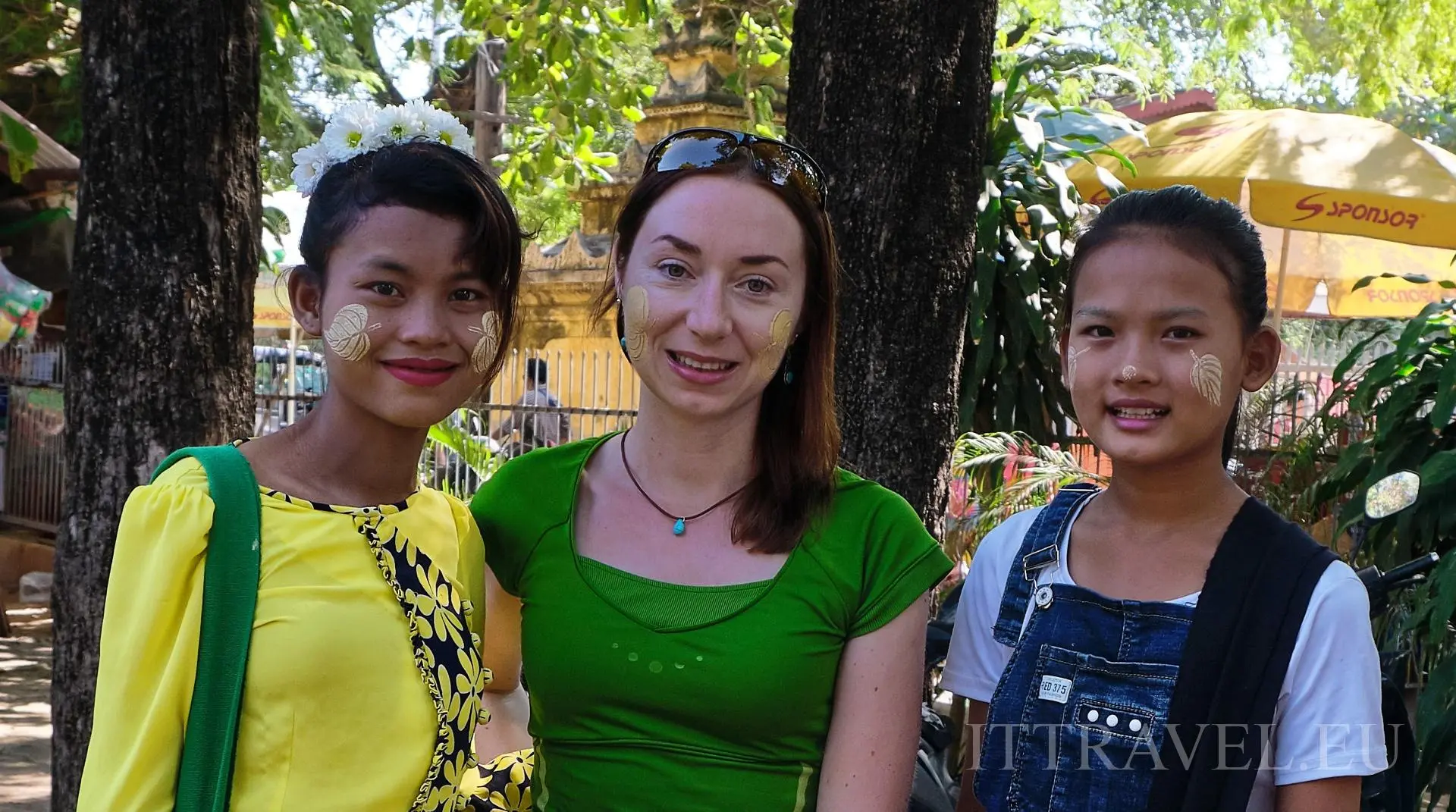
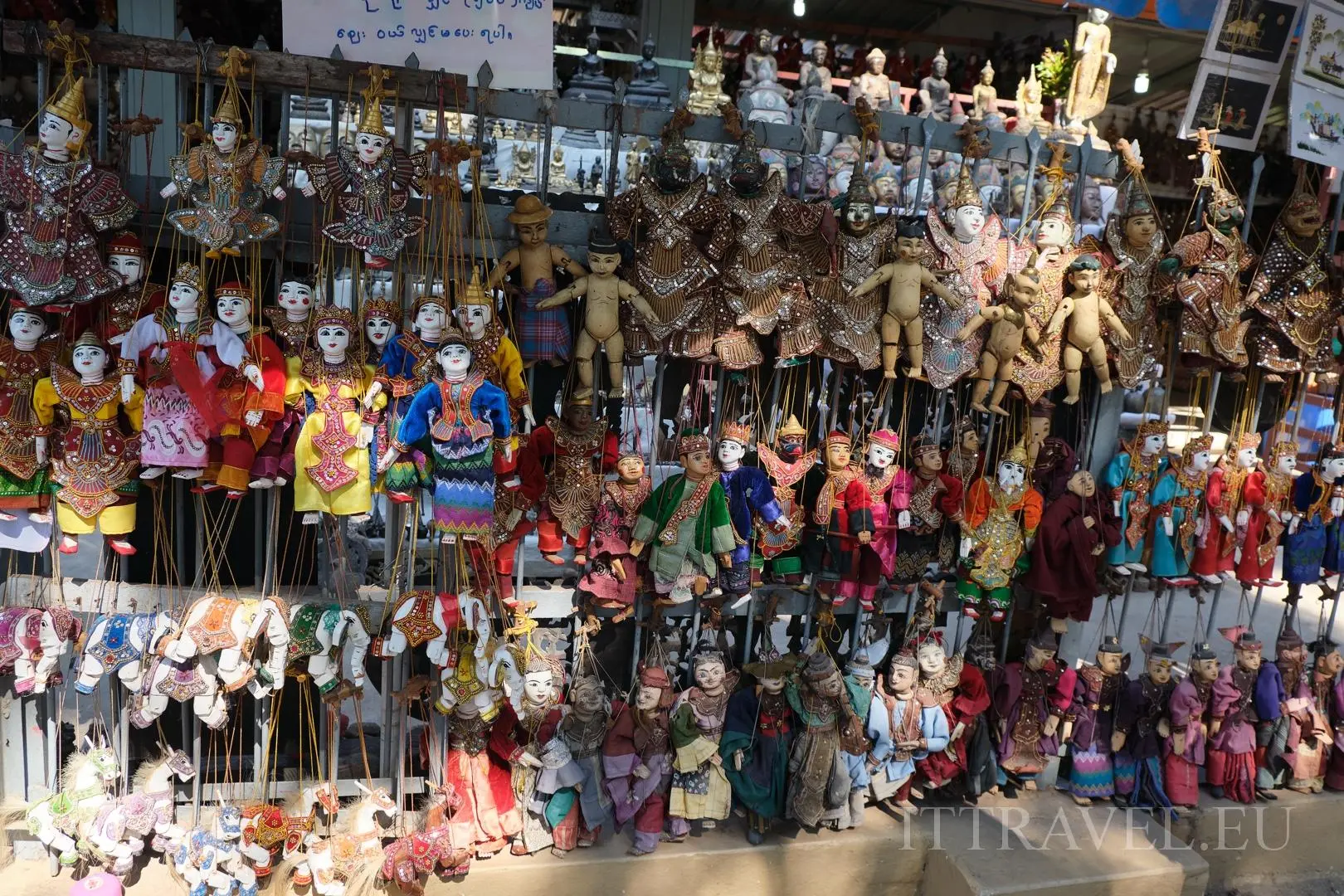
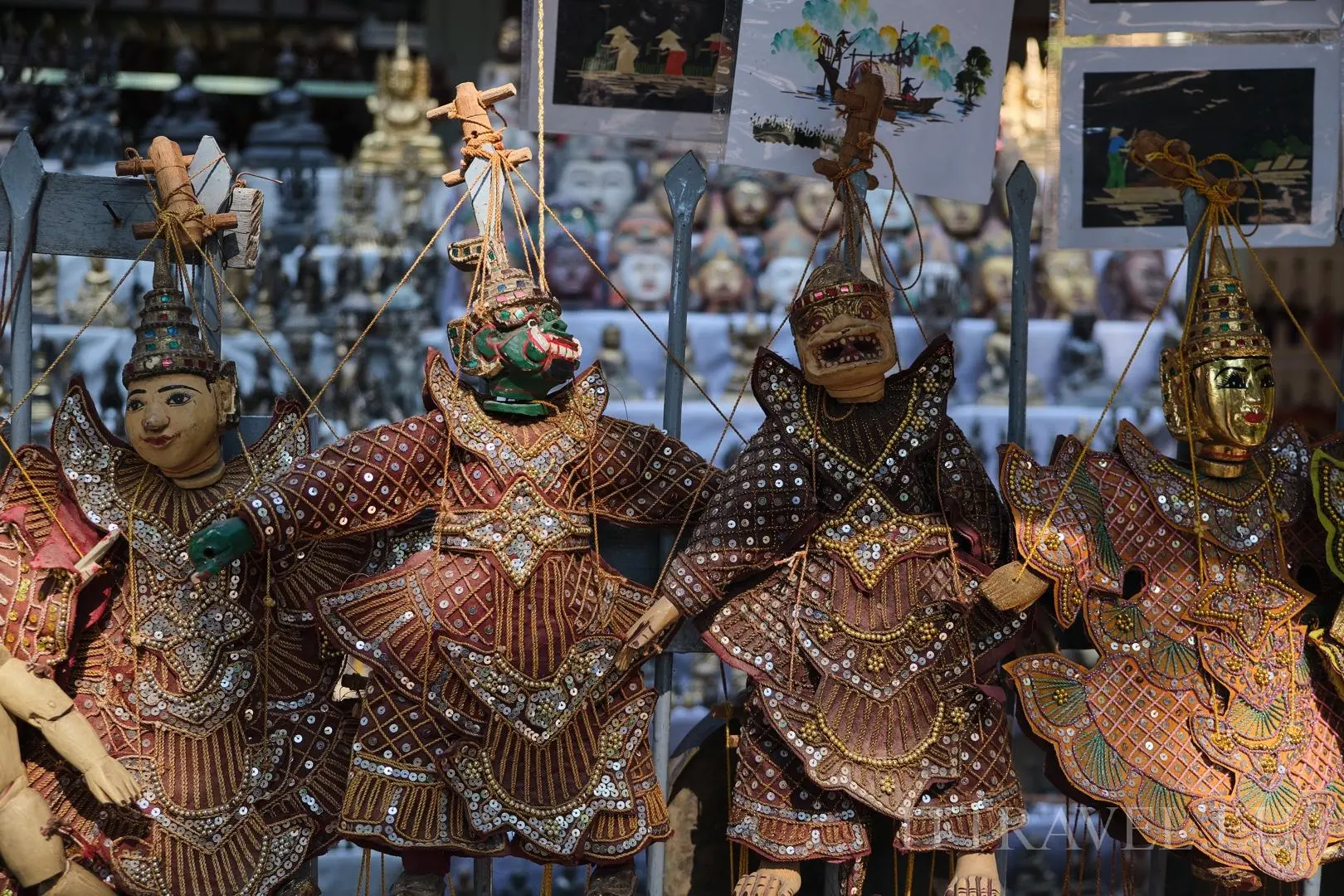
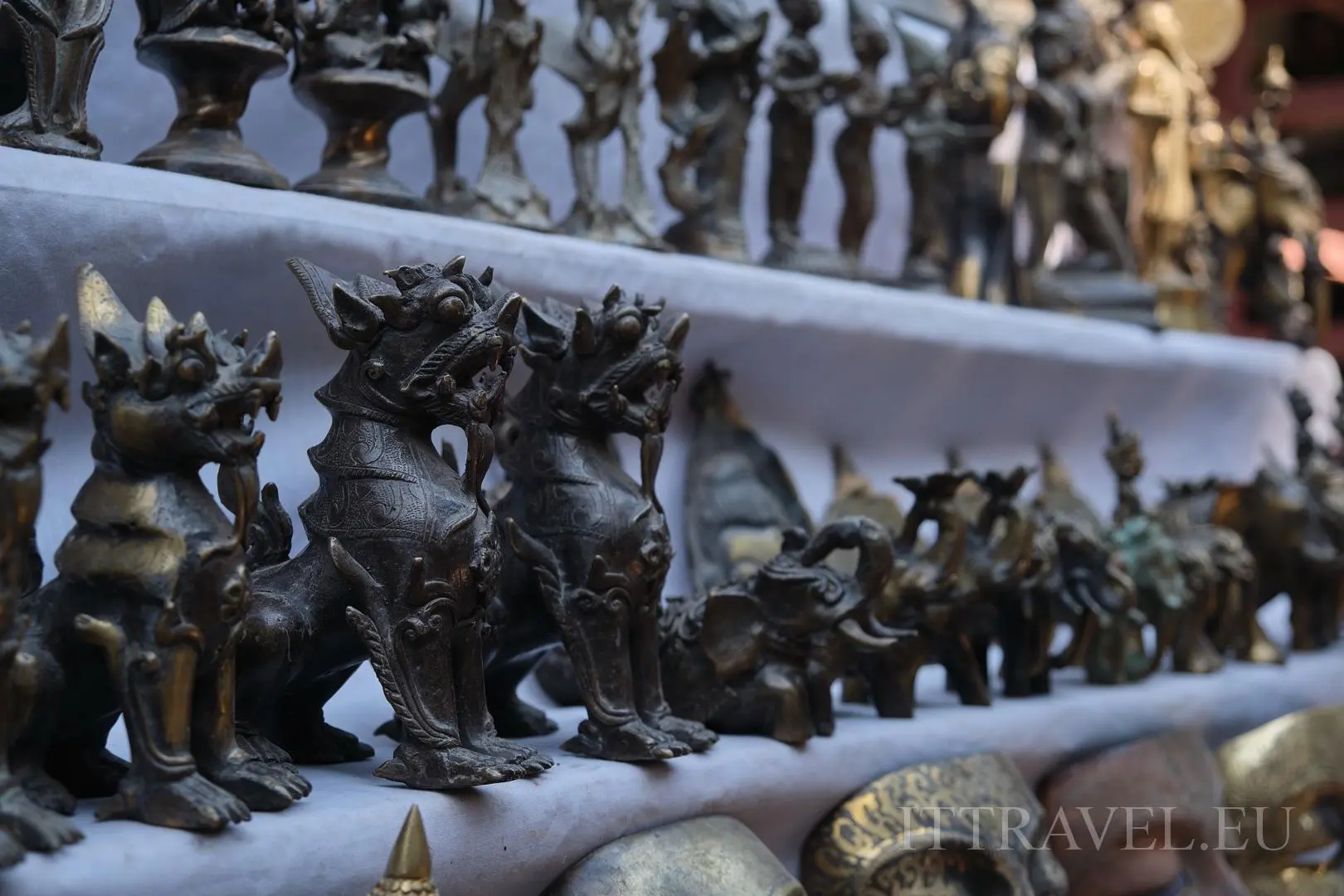
Kuthodaw Pagoda
The construction of the main stupa began in 1860 on the orders of King Mindon, and was completed in 1868. The name literally means "royal merits". It is 57 meters high and is a copy of Shwezigon Pagoda from Bagan. Temple contains "the biggest book in the world", ie 729 small stupas containing Buddhist texts. The temple was richly decorated, but after the city was occupied by the British, they plundered it completely - golden letters, precious stones and golden stupas tops disappeared. The present condition is owed to the reconstruction started in 1892 and completed in 1932. The funds were collected all over the country - among others by the descendants of the royal family. A lot of people come there to take a nice and interesting photo - what we must recommend as "the book" looks very photogenic.
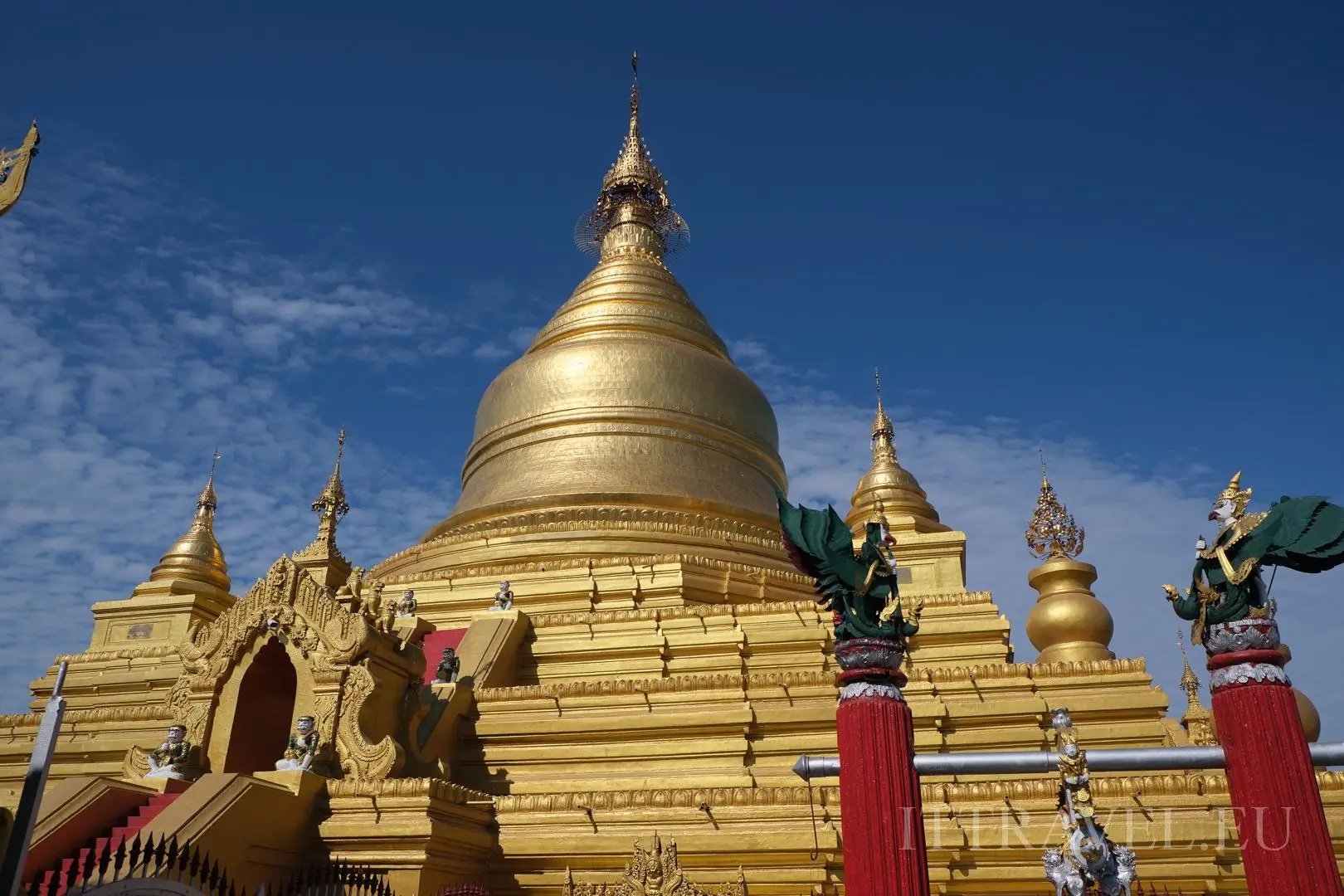
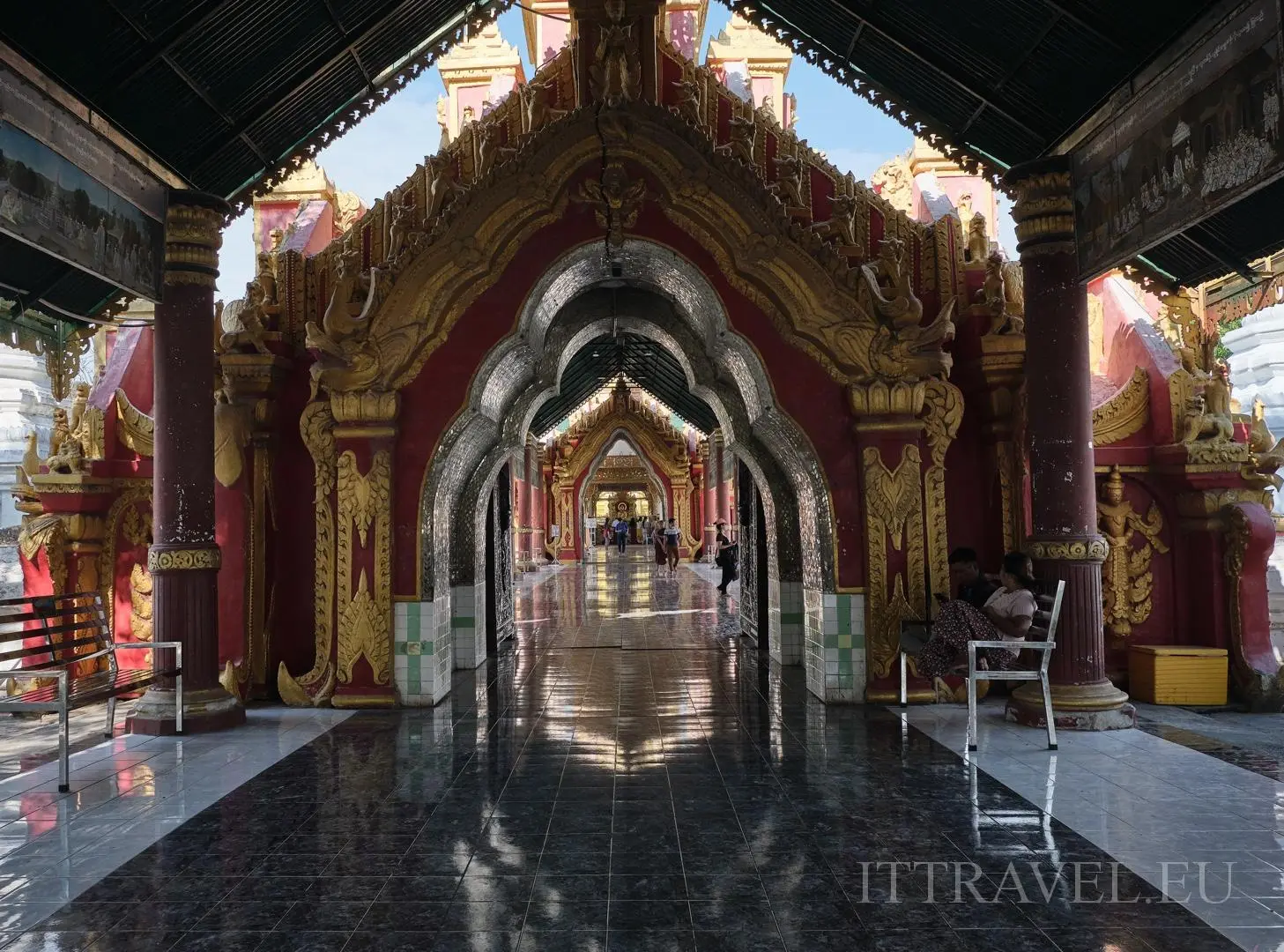
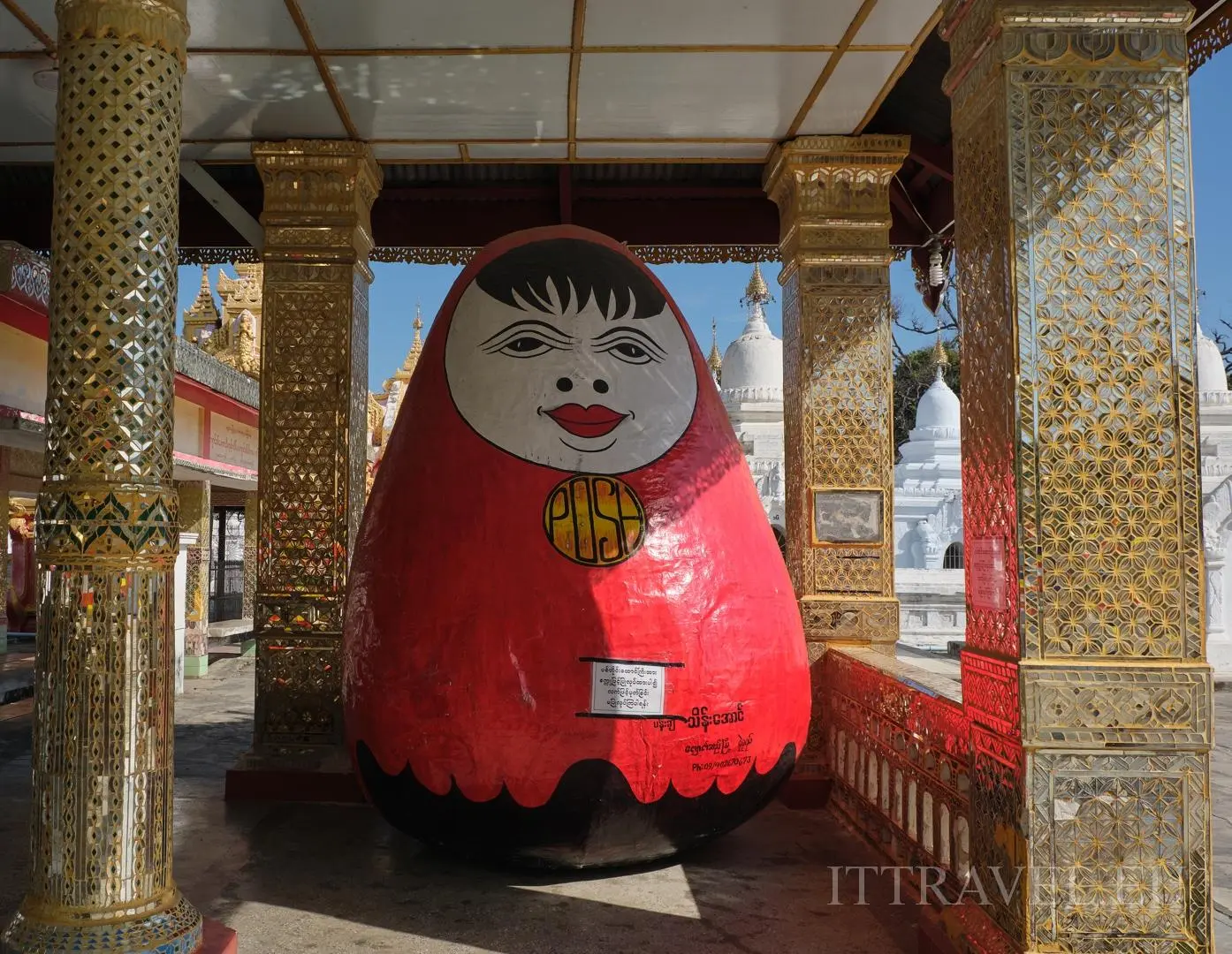
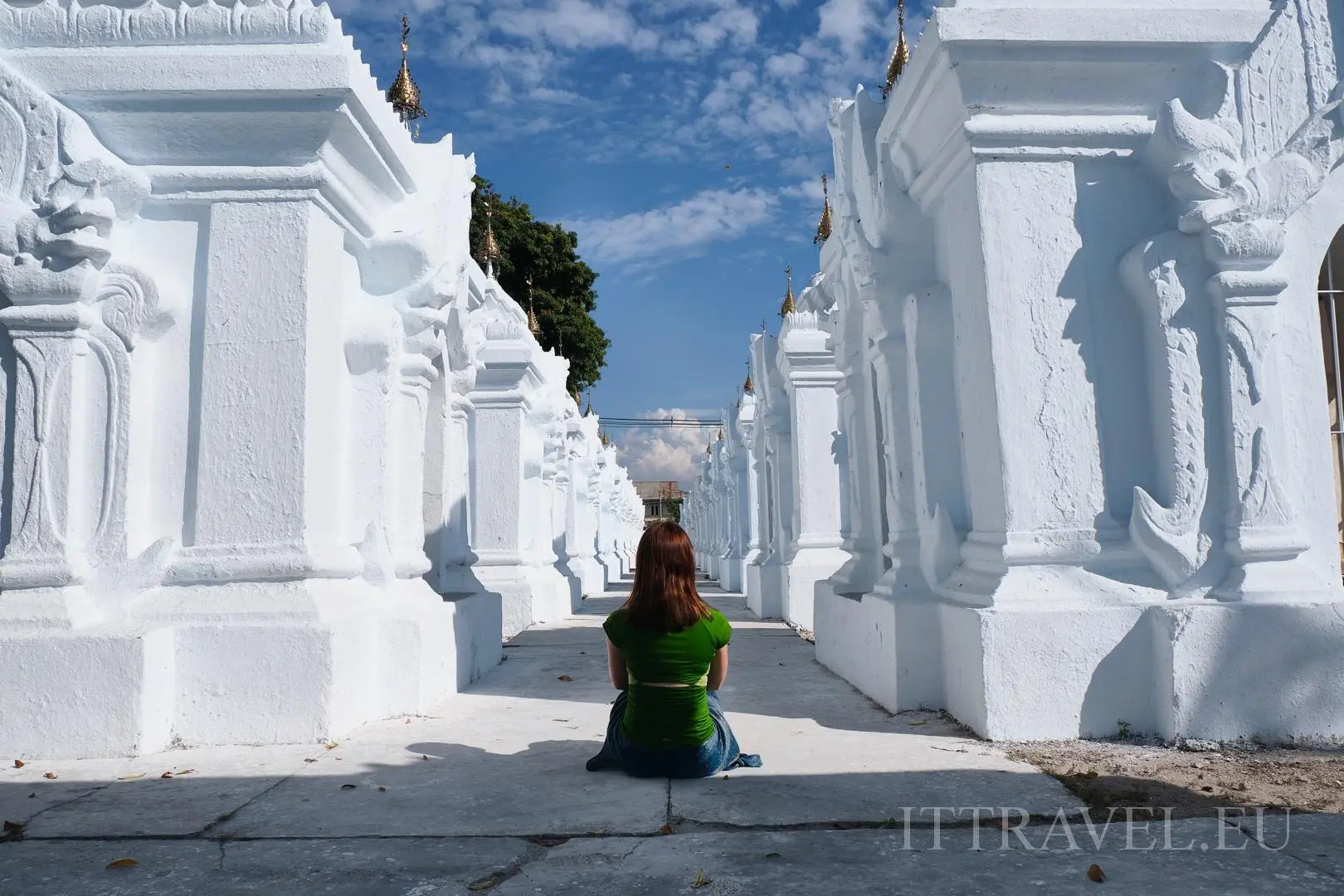

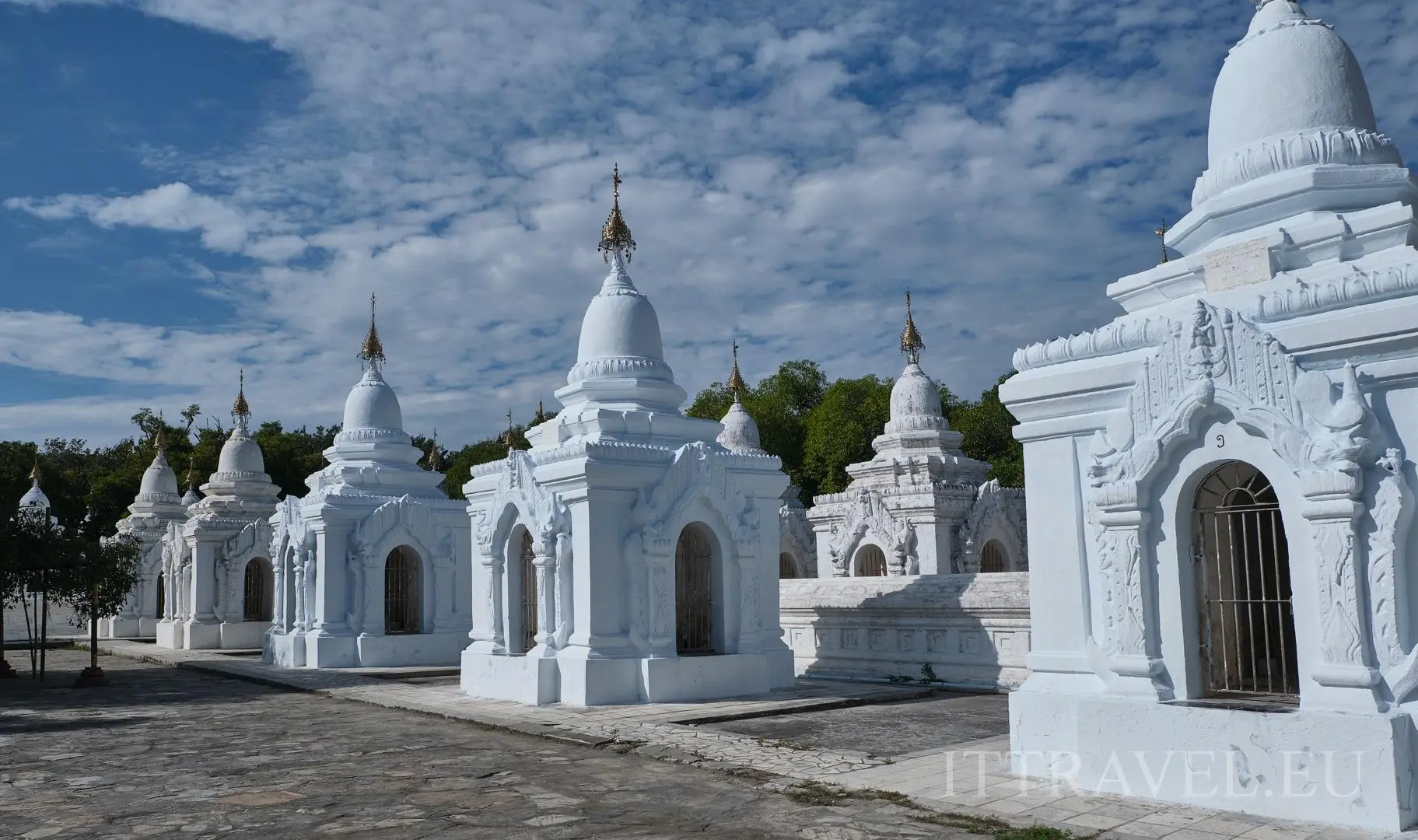
Sanda Muni Pagoda
Positioned right next to the pagoda Kuthodaw was built in 1874 as a tribute to the prince Kanaung, who was killed together with his sons by his nephews as part of the fight for succession on the throne. Around the main stupa are 1774 small stupas housing each marble slab with Buddha's teachings.
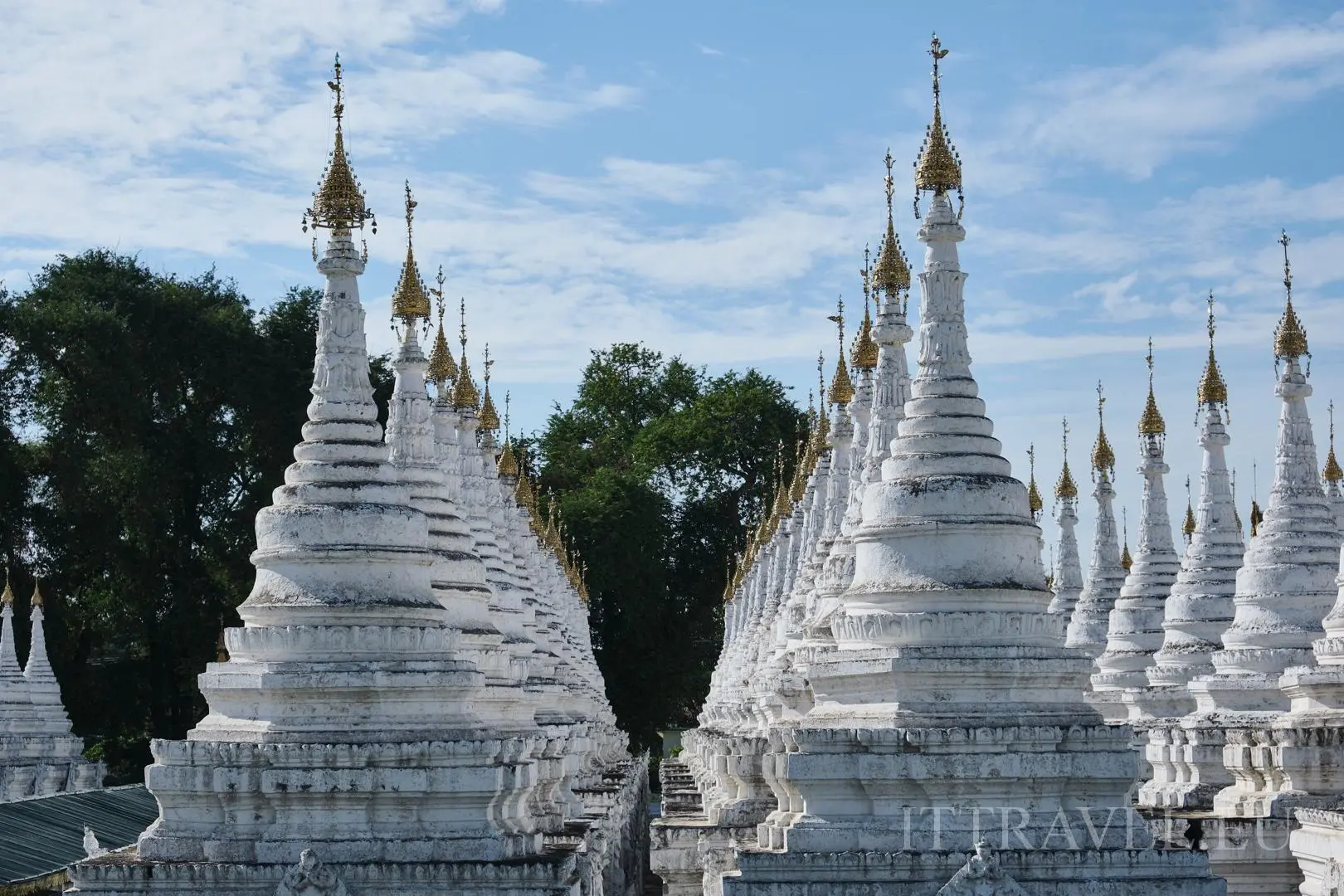
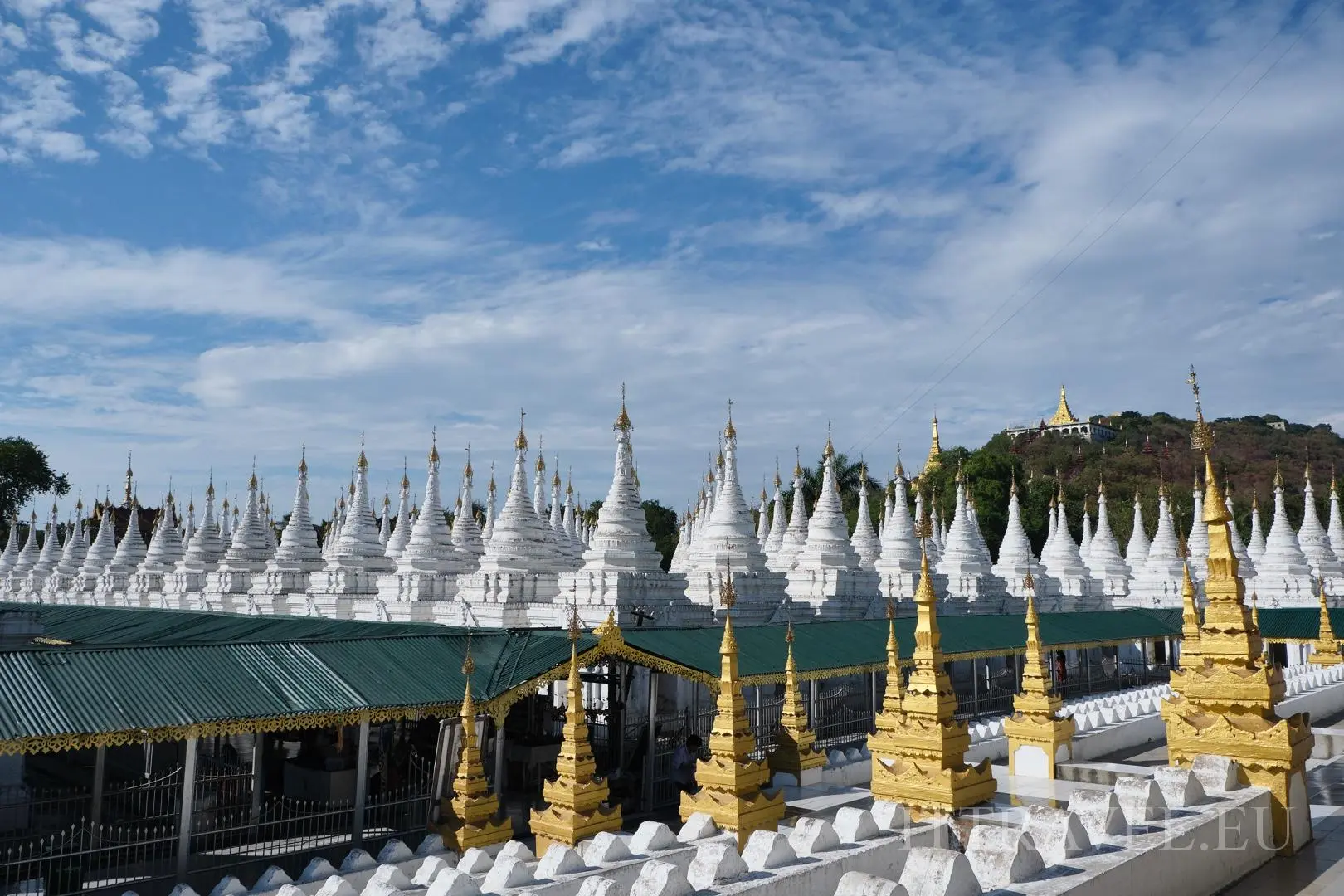
Mandalay Hill
A hill with a height of 236 m gave the name to the city founded in 1857. It is an important center of Buddhist religion. The temple at the top existed at least since the 18th century, and some sources even date back to the 11th century. Along with the expansion of the city, temples on the hill were also extended. After the Third Burmese war, the British blocked access to religious sites for the Burmese. The ban was lifted only after the petition to Queen Victoria in 1890, unfortunately the state of the building was already bad at that moment, and the destruction was finalised by fires from 1883 to 1900. At present, only the Shwegyin monastery comes from the period when the city was founded. On the top of the hill is Su Taung Phyi Phaya Temple, which existed already during the lifetime of King Mindon. You can get to the top by elevators and escalators from the east. If you like to walk stairs are from the south - they are easy to find - they start with huge lions.
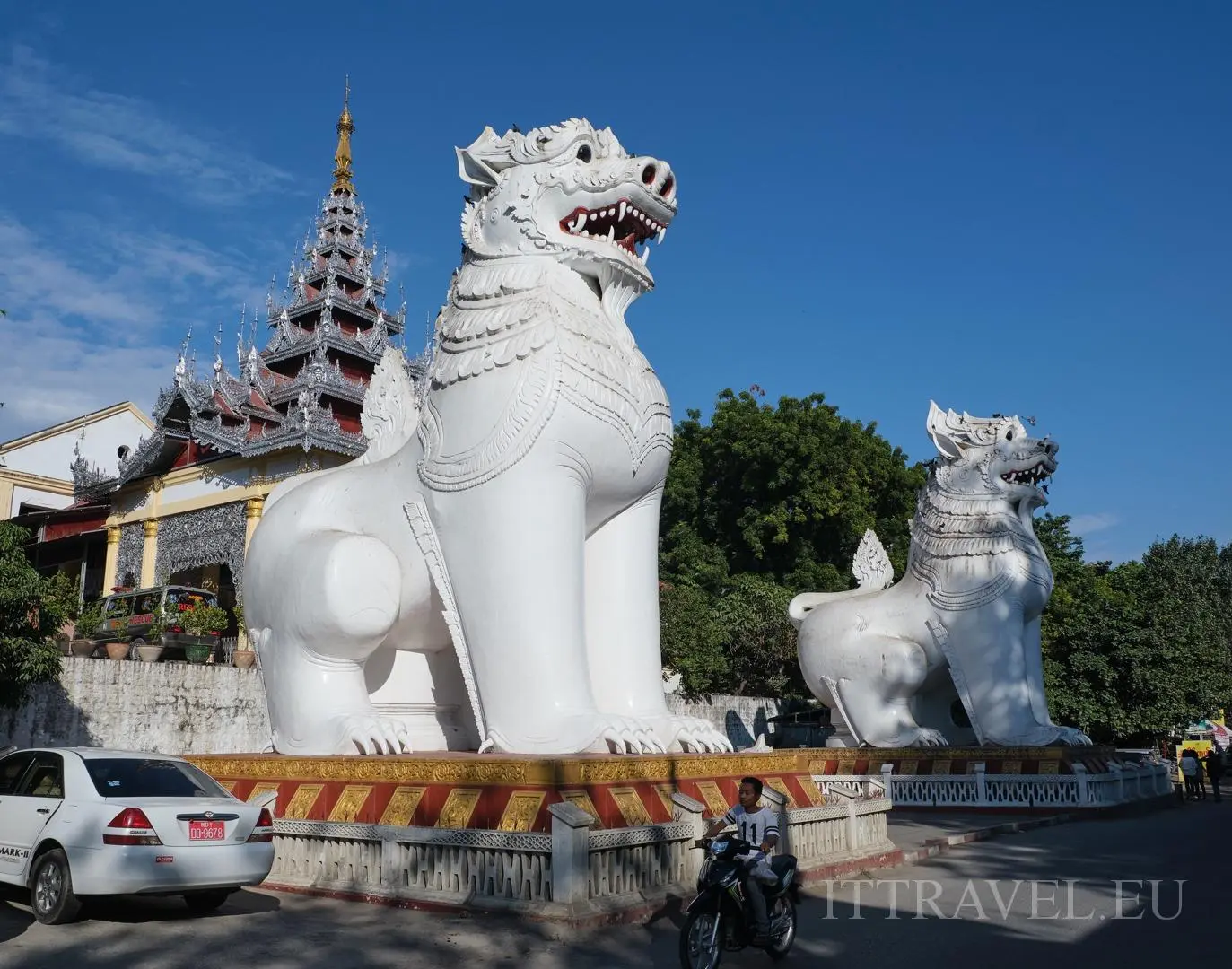
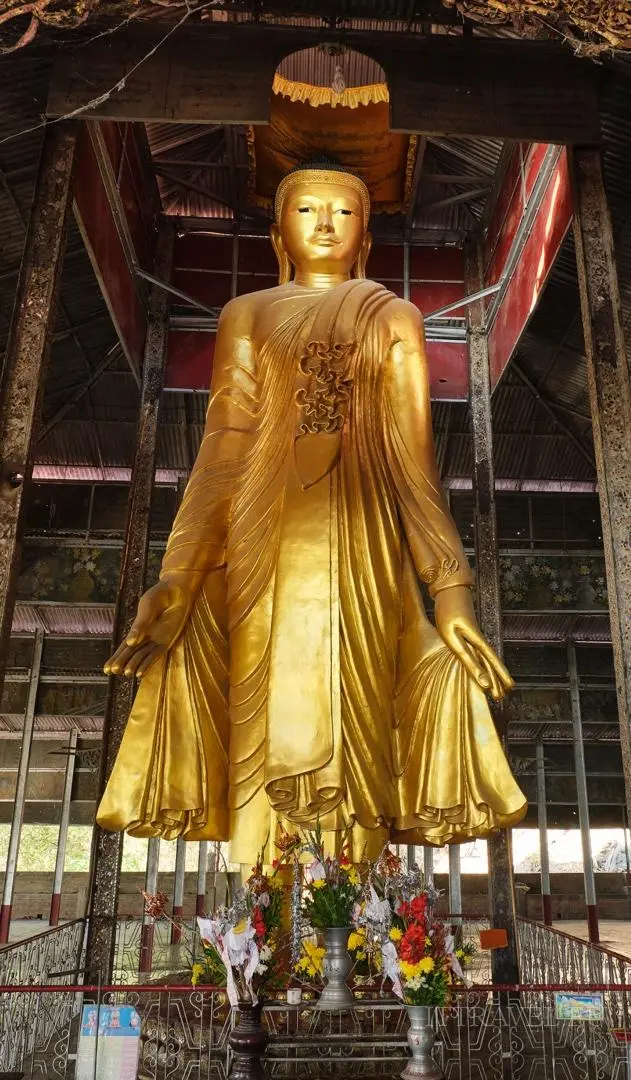
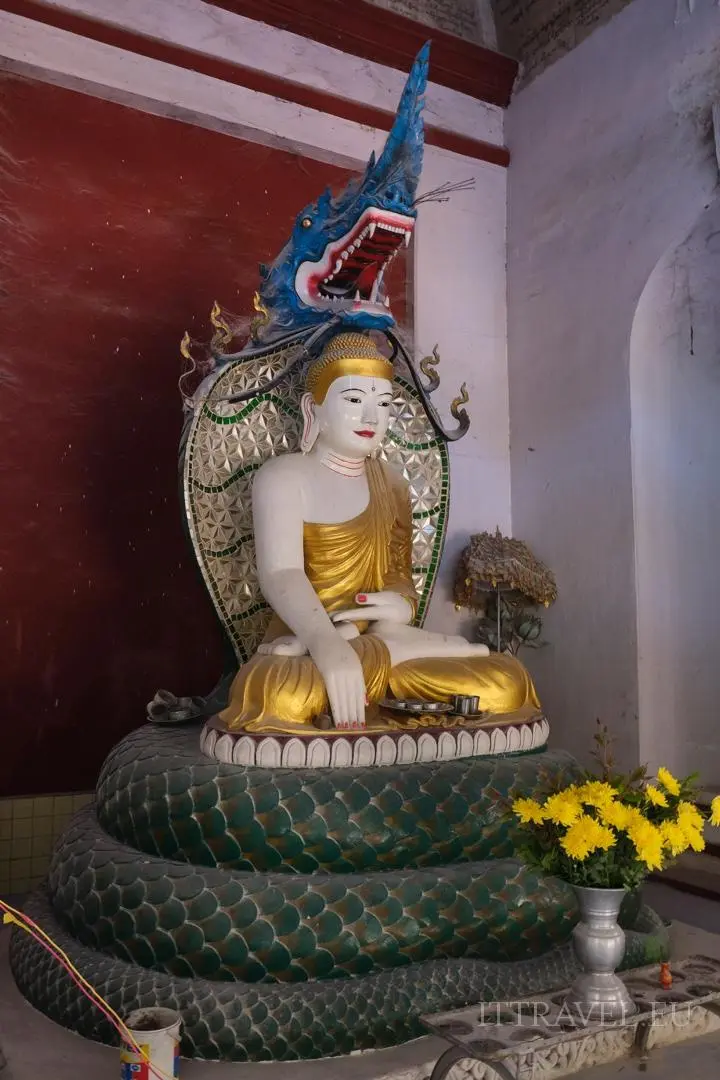
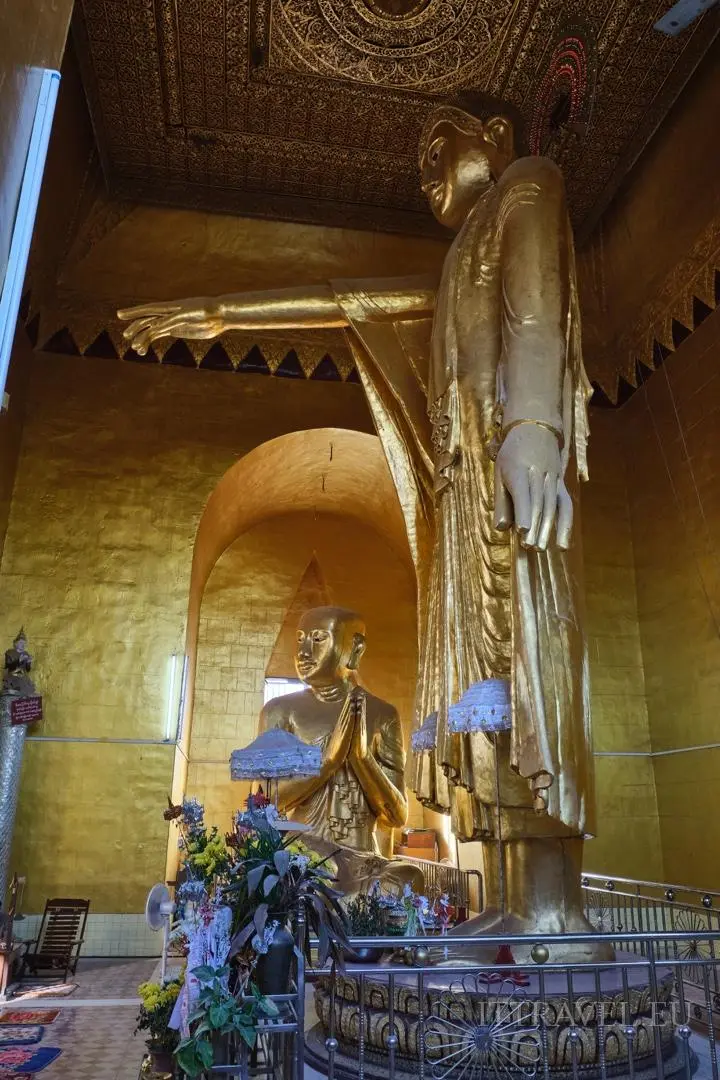
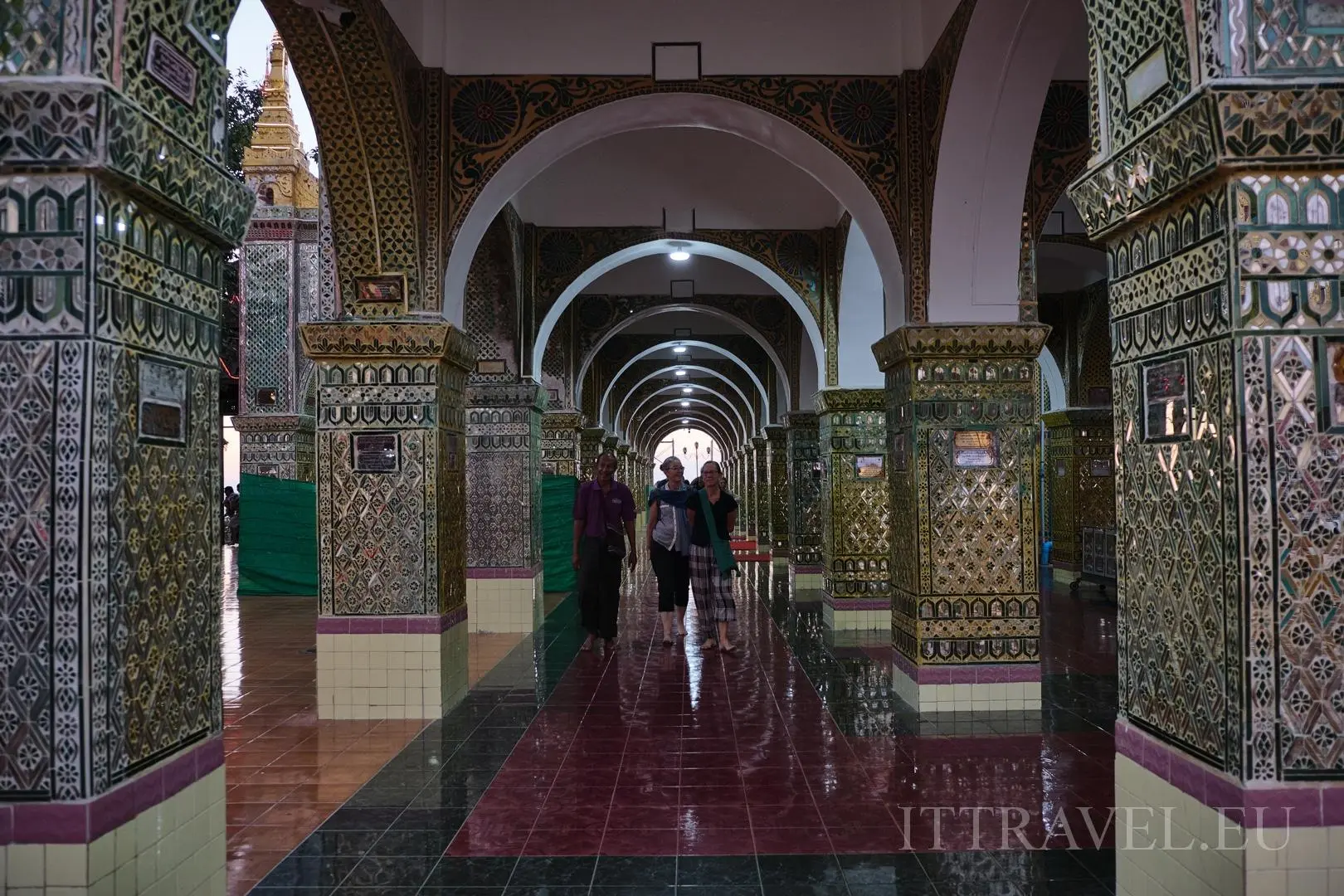
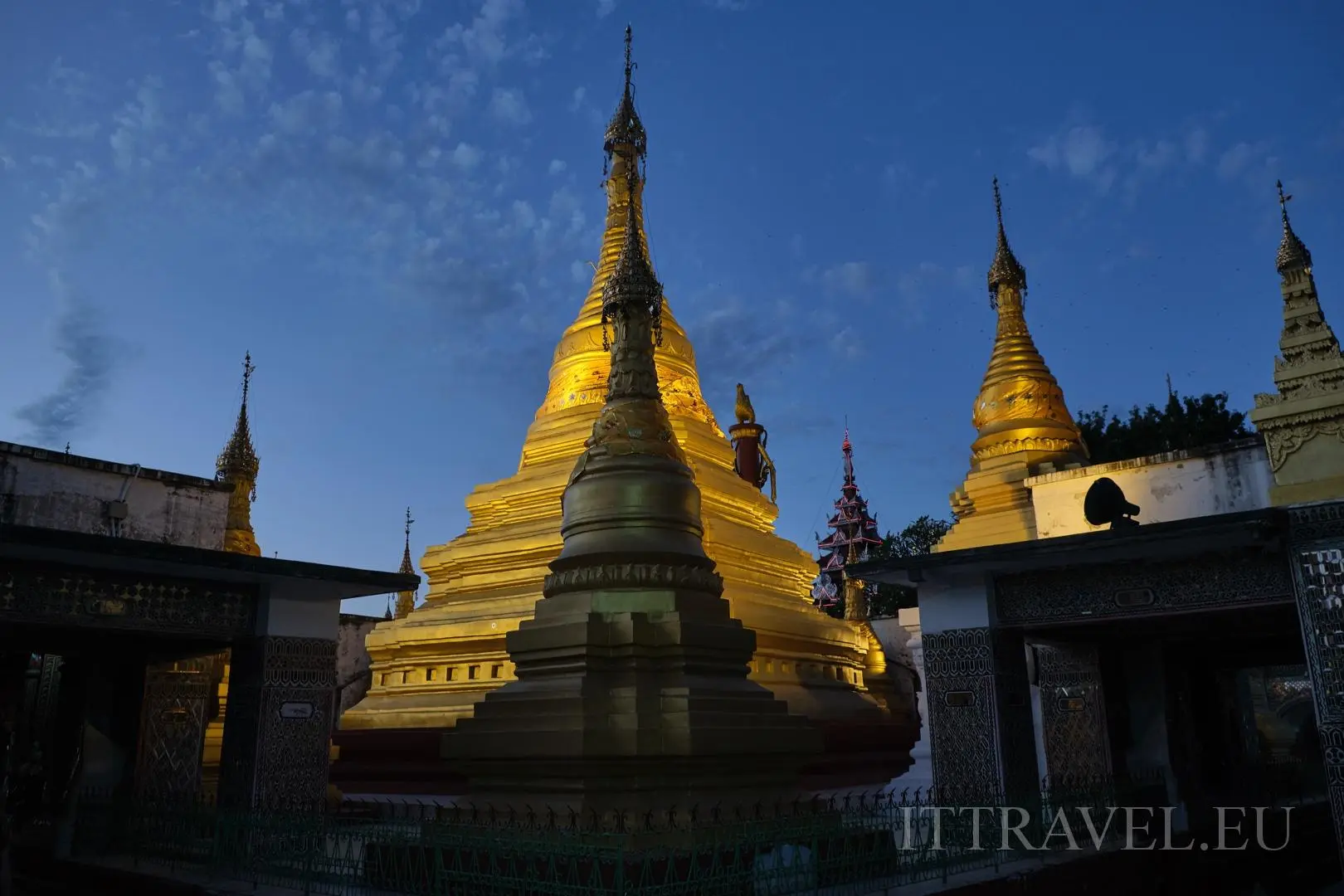
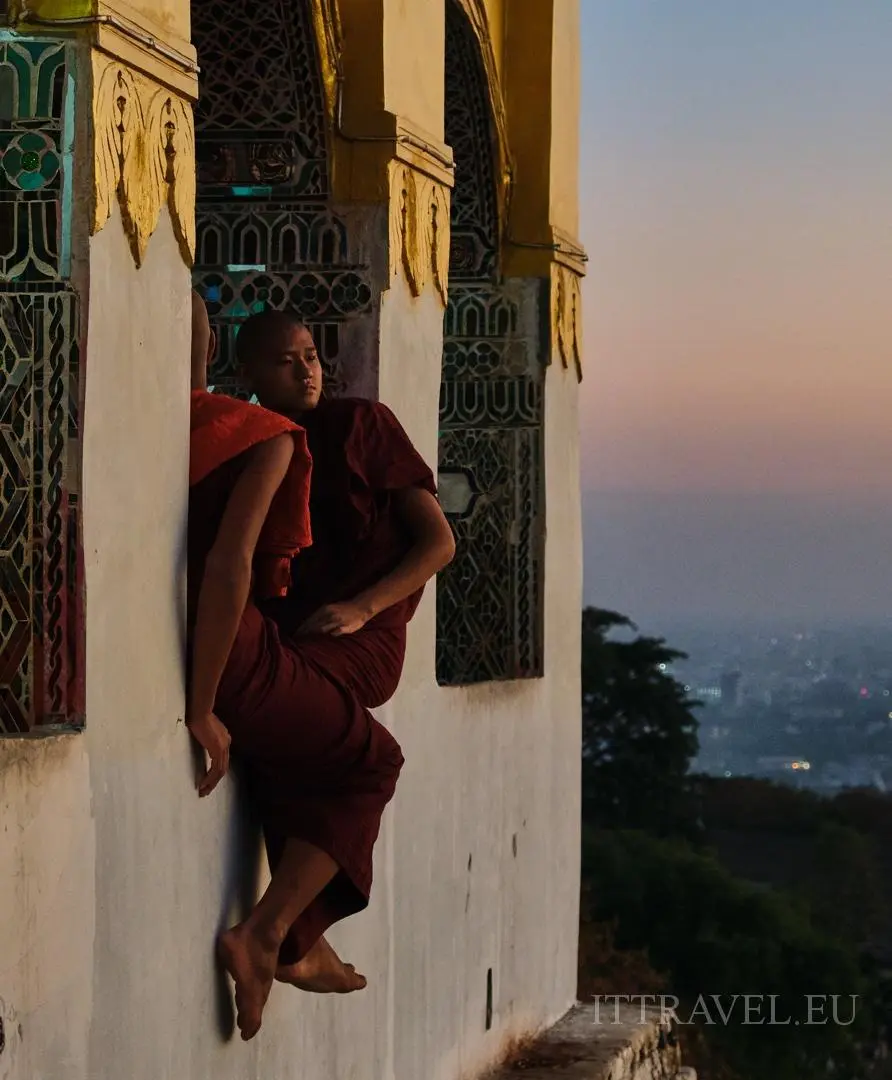
There are many universities on the outskirts of the city. In many tourist places we were "attacked" by students who want to practice English. On the Mandalay hill we spent a lot of time with a group of them. Each of us was surrounded by several people who wanted to talk. The girls were more likely to talk with Karolina, while the men (including monks) with Jacek. Burmese youth is curious about the world, we told them about Poland, Europe, we showed pictures of our country covered with snow. We also tried to find out as much as possible about Burma and its inhabitants. We were very saddened by the fact that secondary education is free of charge since very short time. The level of teaching is not the best and more wealthy parents decide to send their children to private schools. All students have to pay for the college.
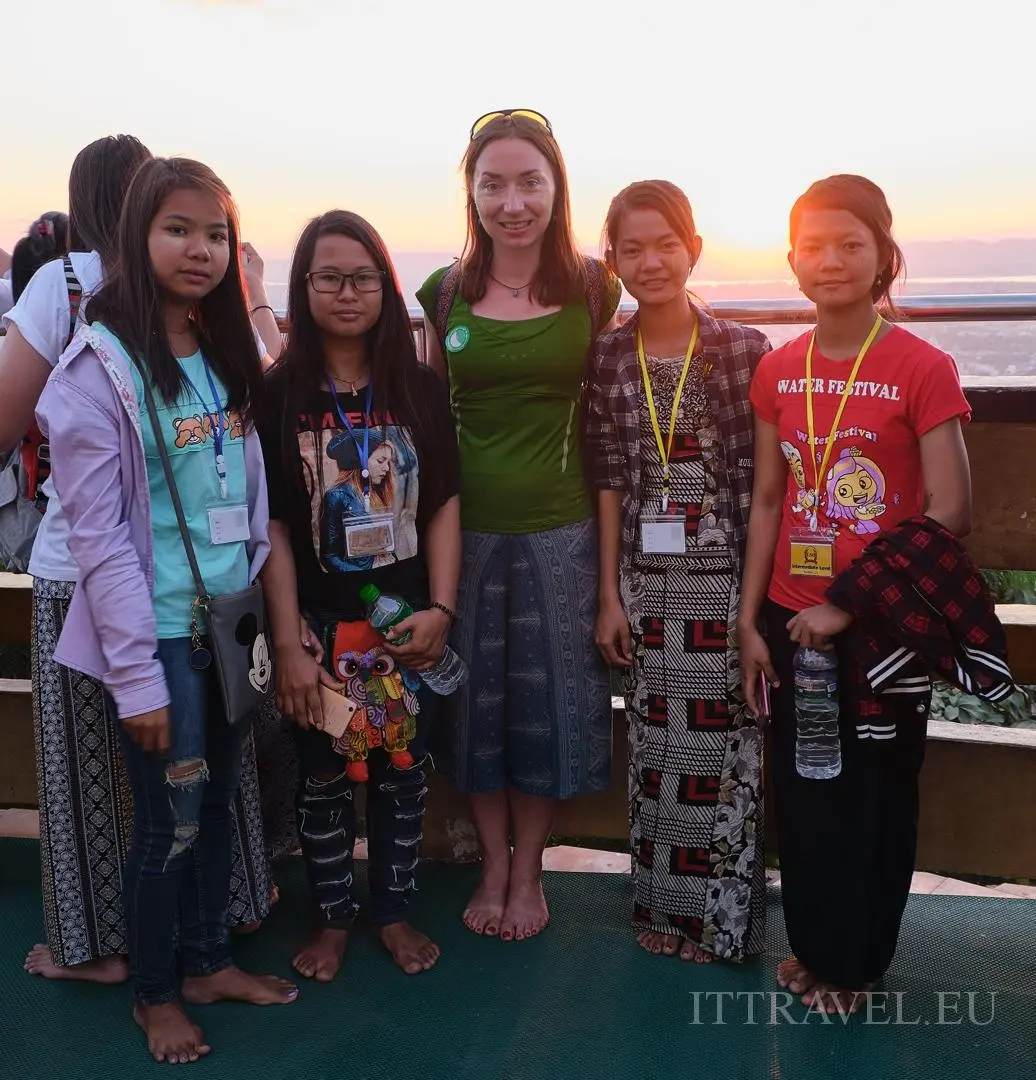
Historical area Min Kun
You can get there by ferry leaving at 9 am, or as we did on a scooter (takes about 90 minutes). The entrance fee for all facilities costs 5000 Kyat (3 EUR) per person
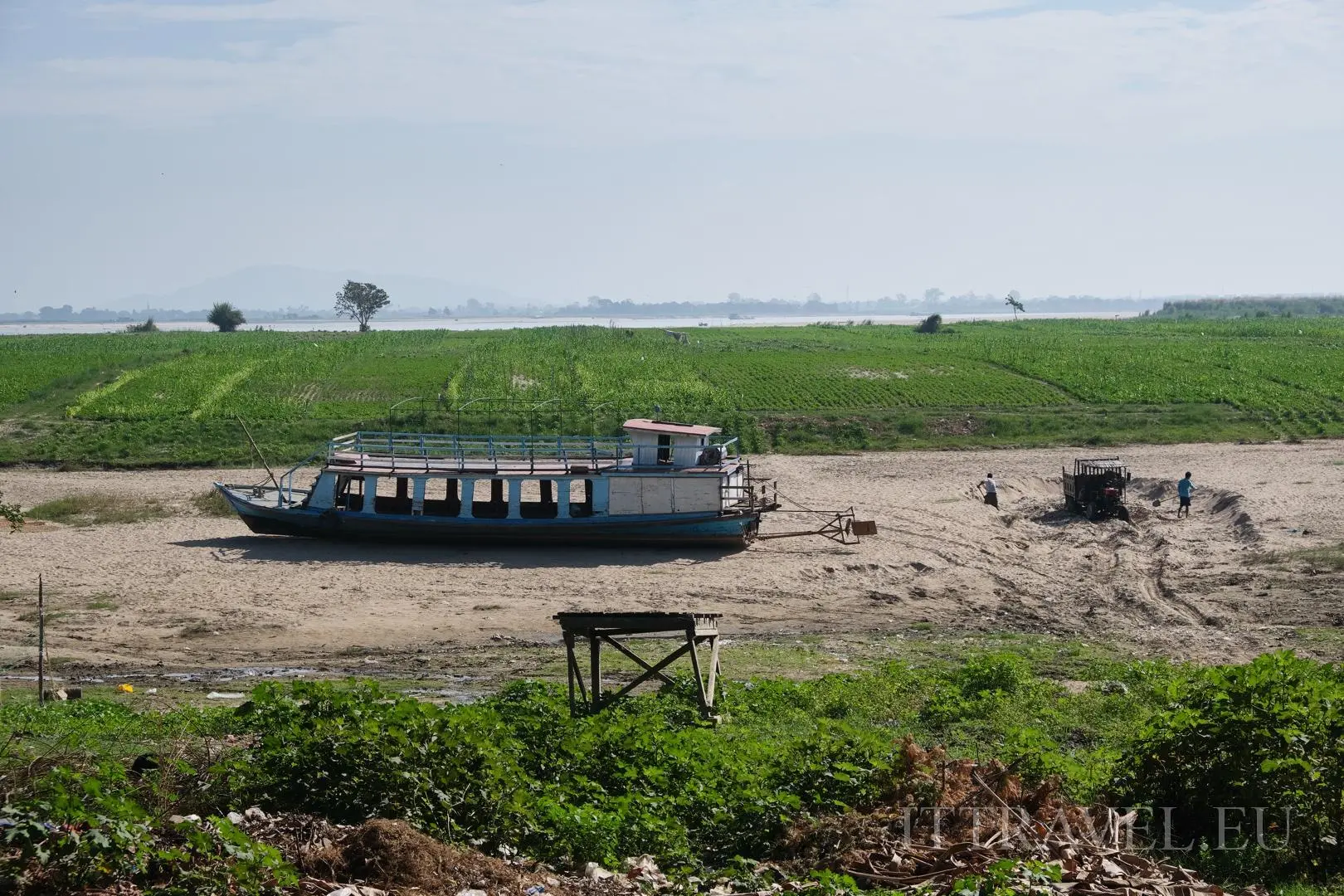
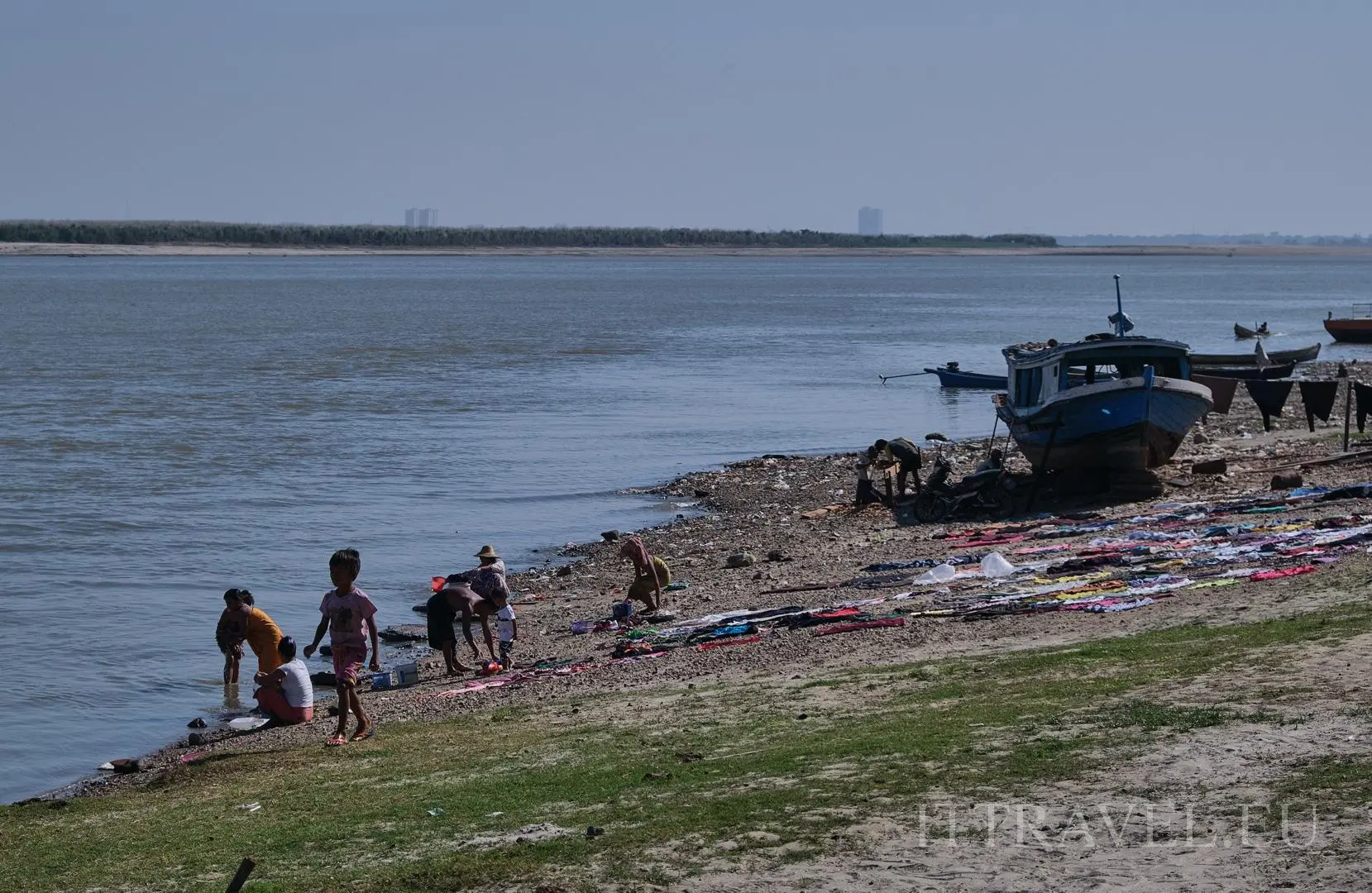
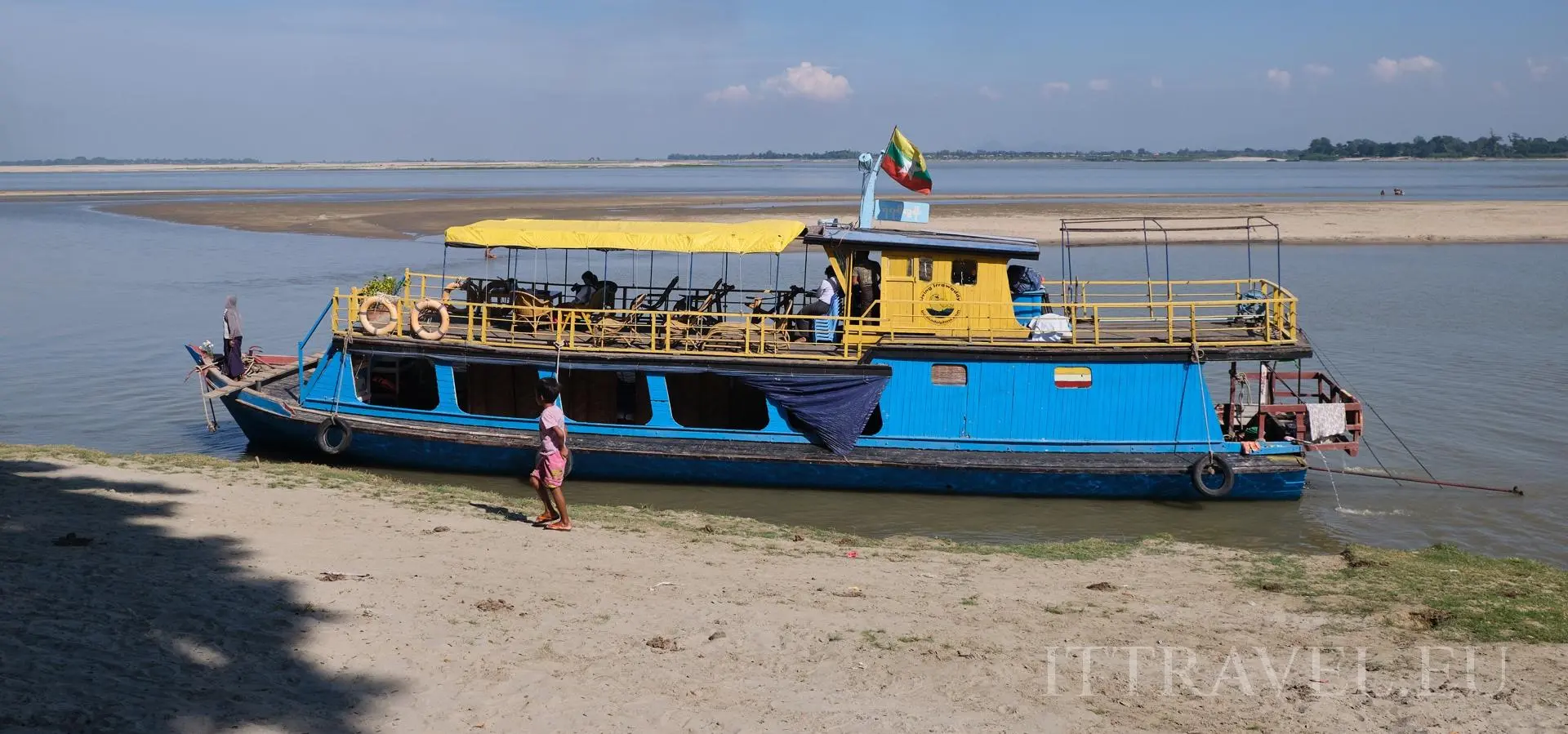
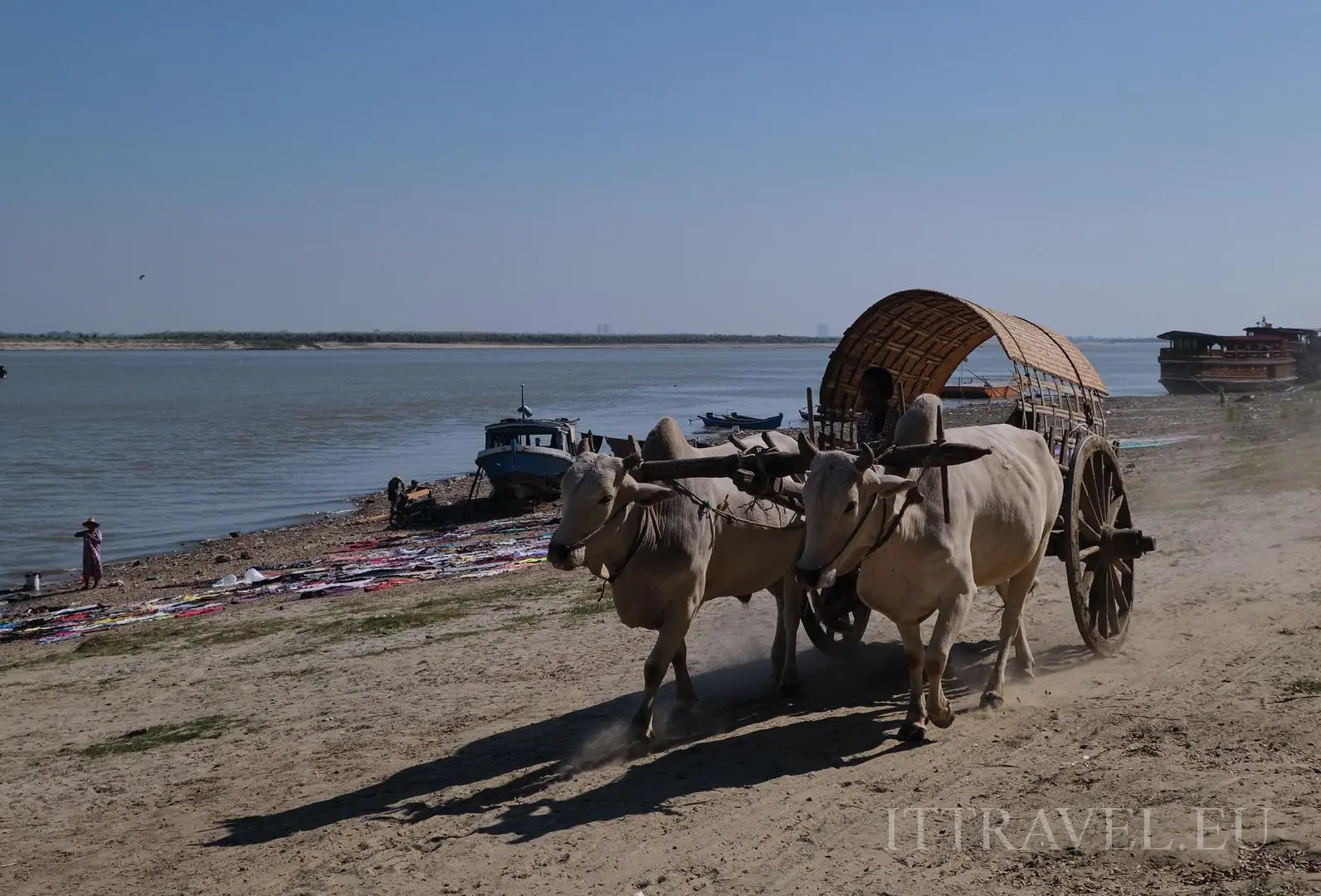
Min Kun Pagoda
Directly translating: The Great Royal Pagoda in Mingwan. Construction began in 1791 and was probably stopped in 1812. According to legend, King Bodawpaya learned about the prophecy according to which the kingdom would fall when he will finished the pagoda. However, it is more likely that the earthquake of 1812 led to such deep damage that it was not possible to continue construction. Currently, the ruins are about 50 meters high, from the planned 170 m. The building is impressive, especially if you imagine what it would look like.
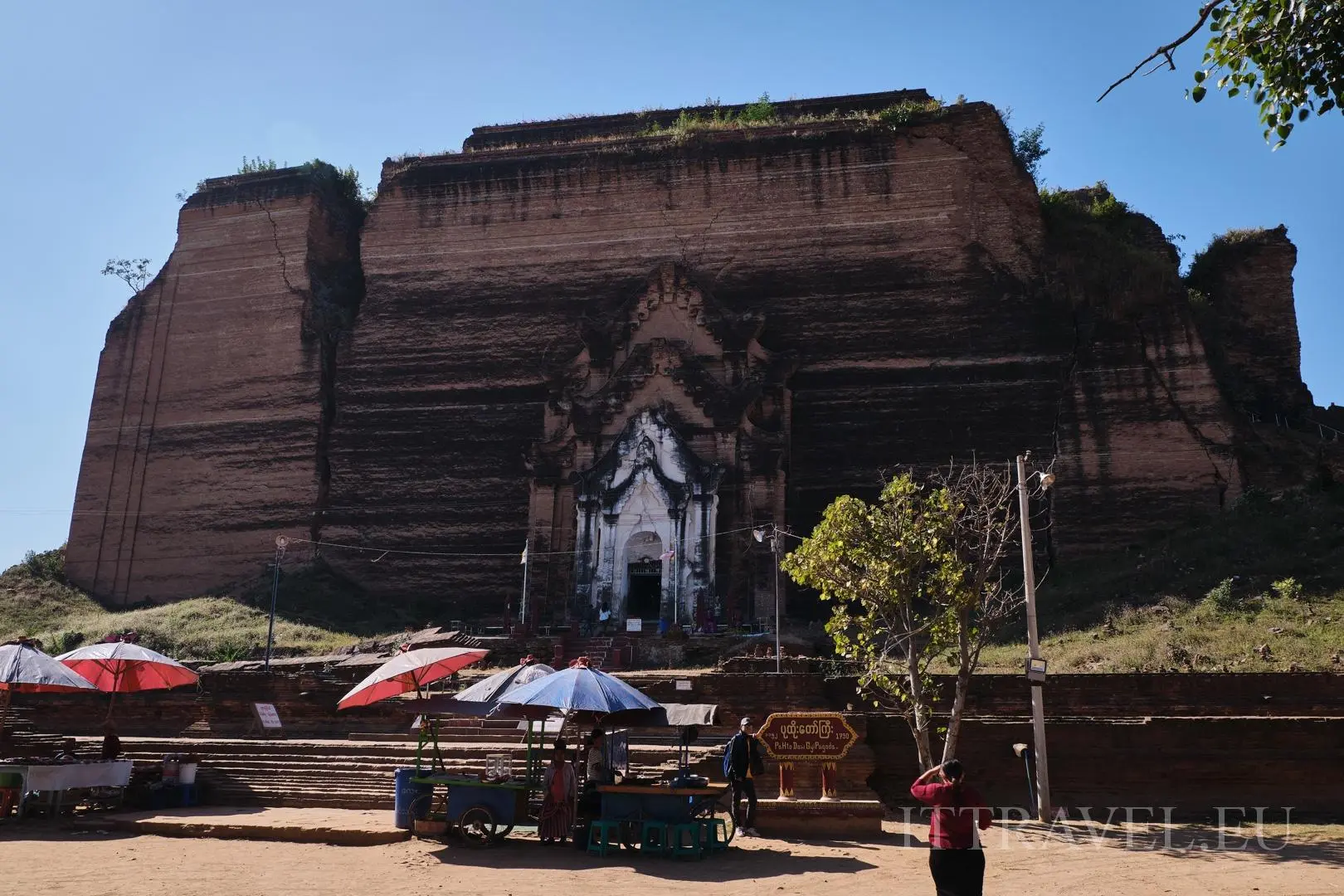
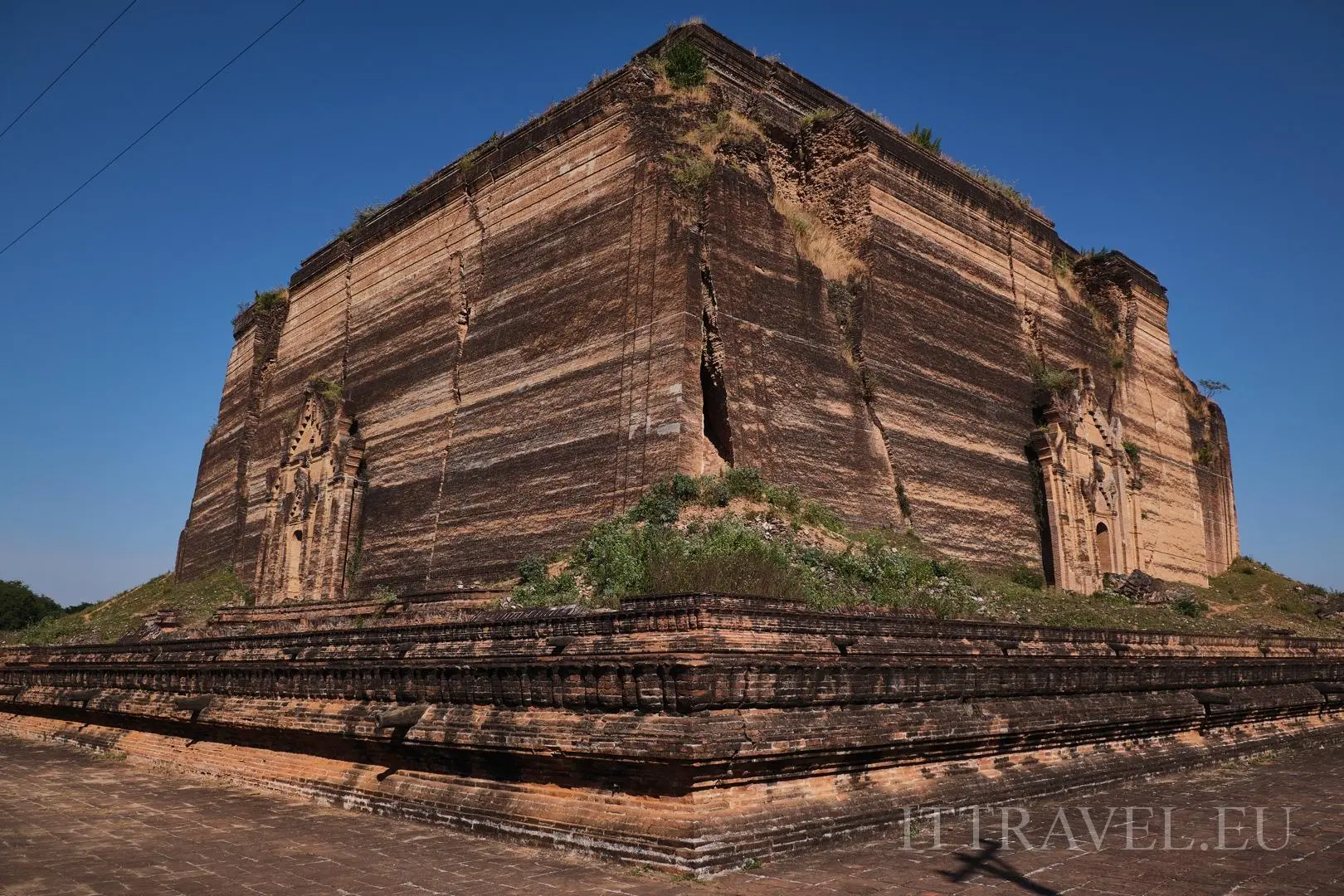
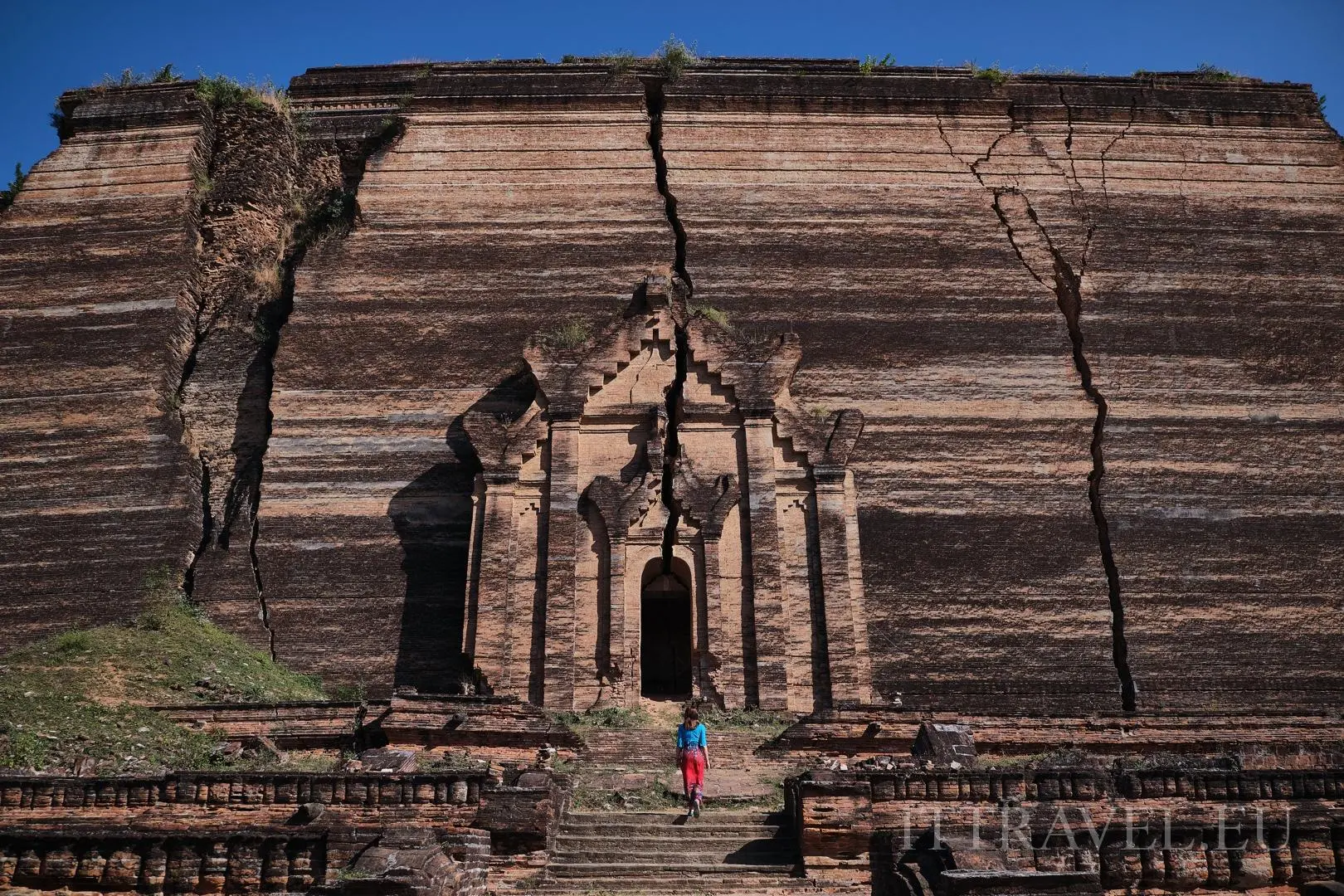
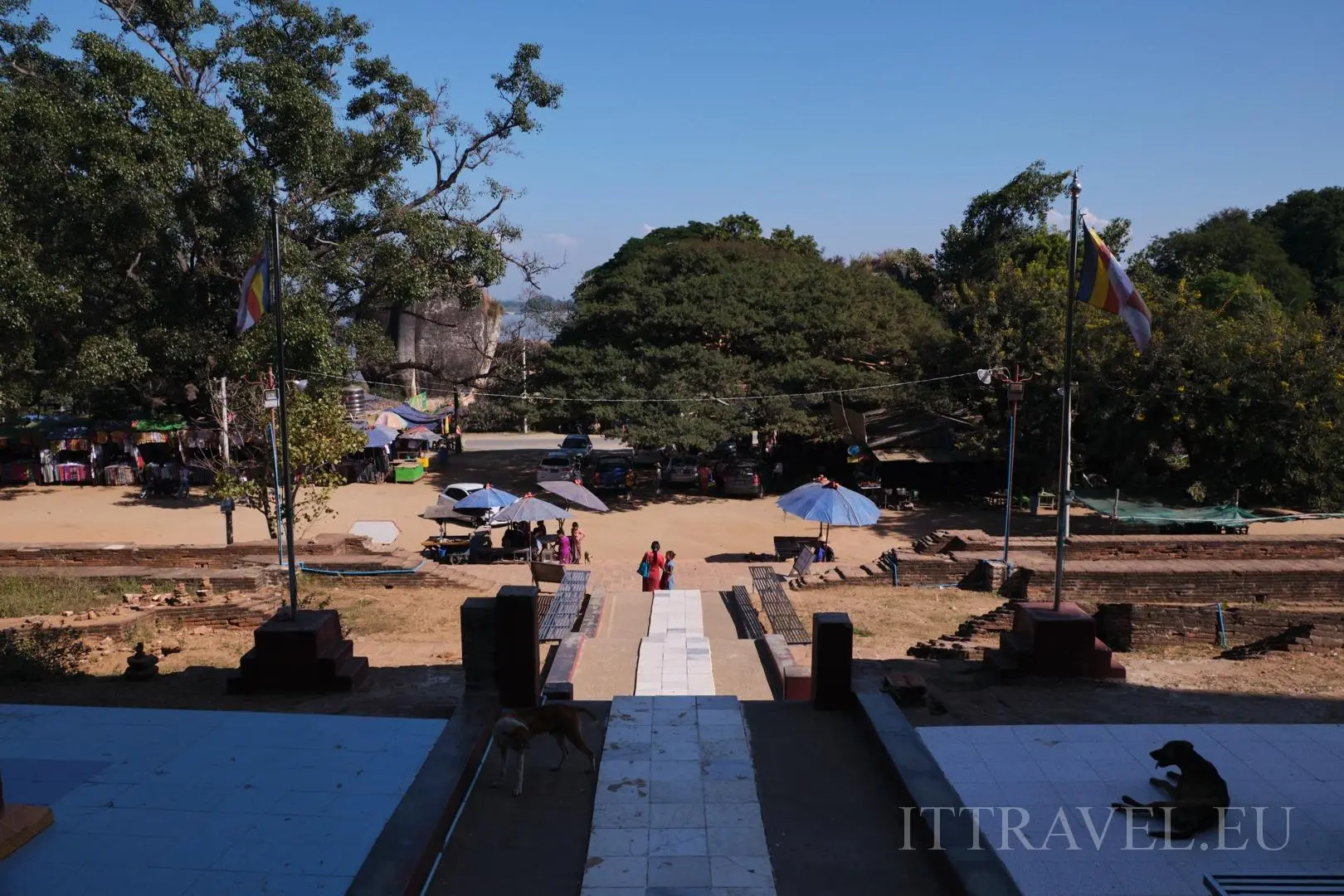
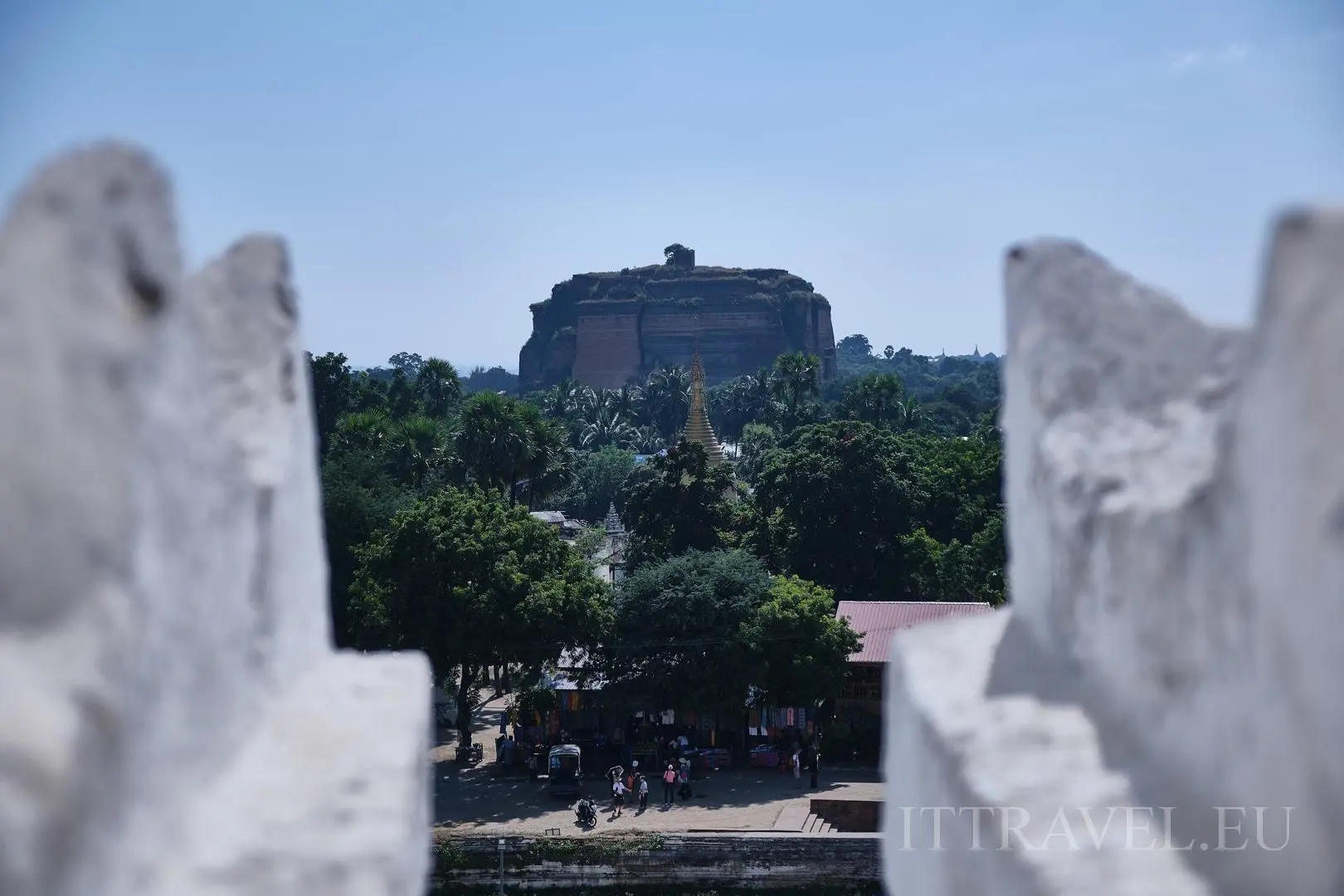
Min Kun Bell
A 90-ton bronze bell cast in 1808 for the emerging pagoda. Until year 2000 it had the second position in the world of terms of size. Next to the bell, are wooden beams, that can be use to "play" on the bell.
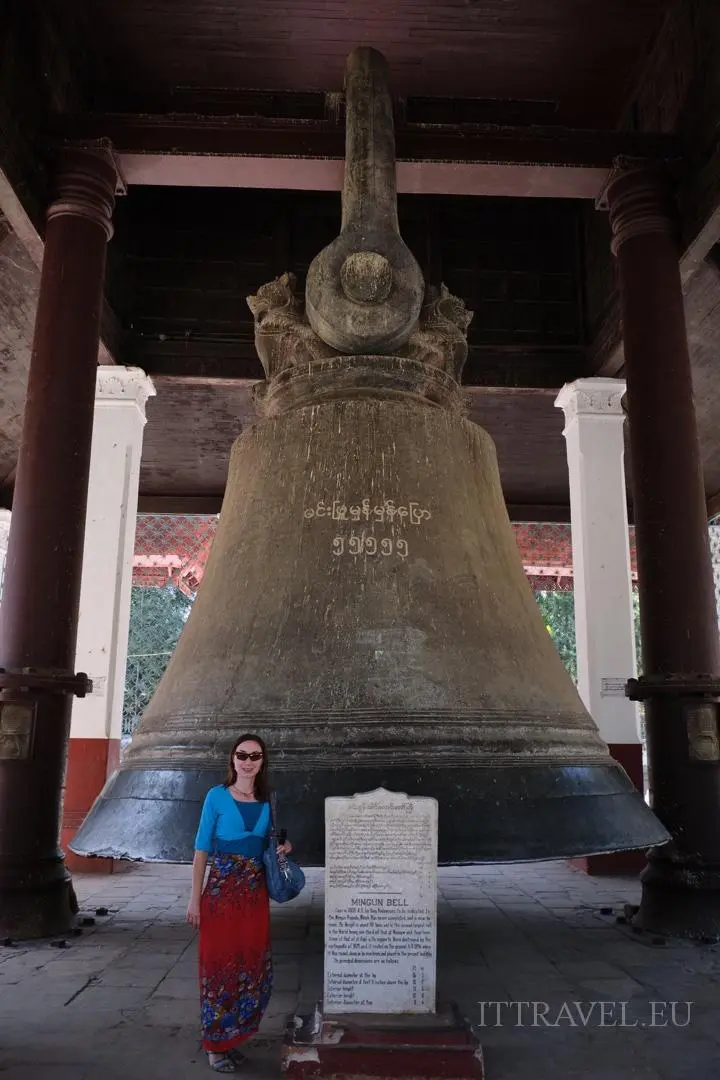
Stone Lions
From the bank of the Irawadi river, where the marina was located, there was a road guarded by huge lions - almost 30 meters high. Unfortunately, the earthquake of 1838 damaged them so much that the preserved fragments present buttocks with a tail. After all, thanks to them you can imagine how they looked 200 years ago.
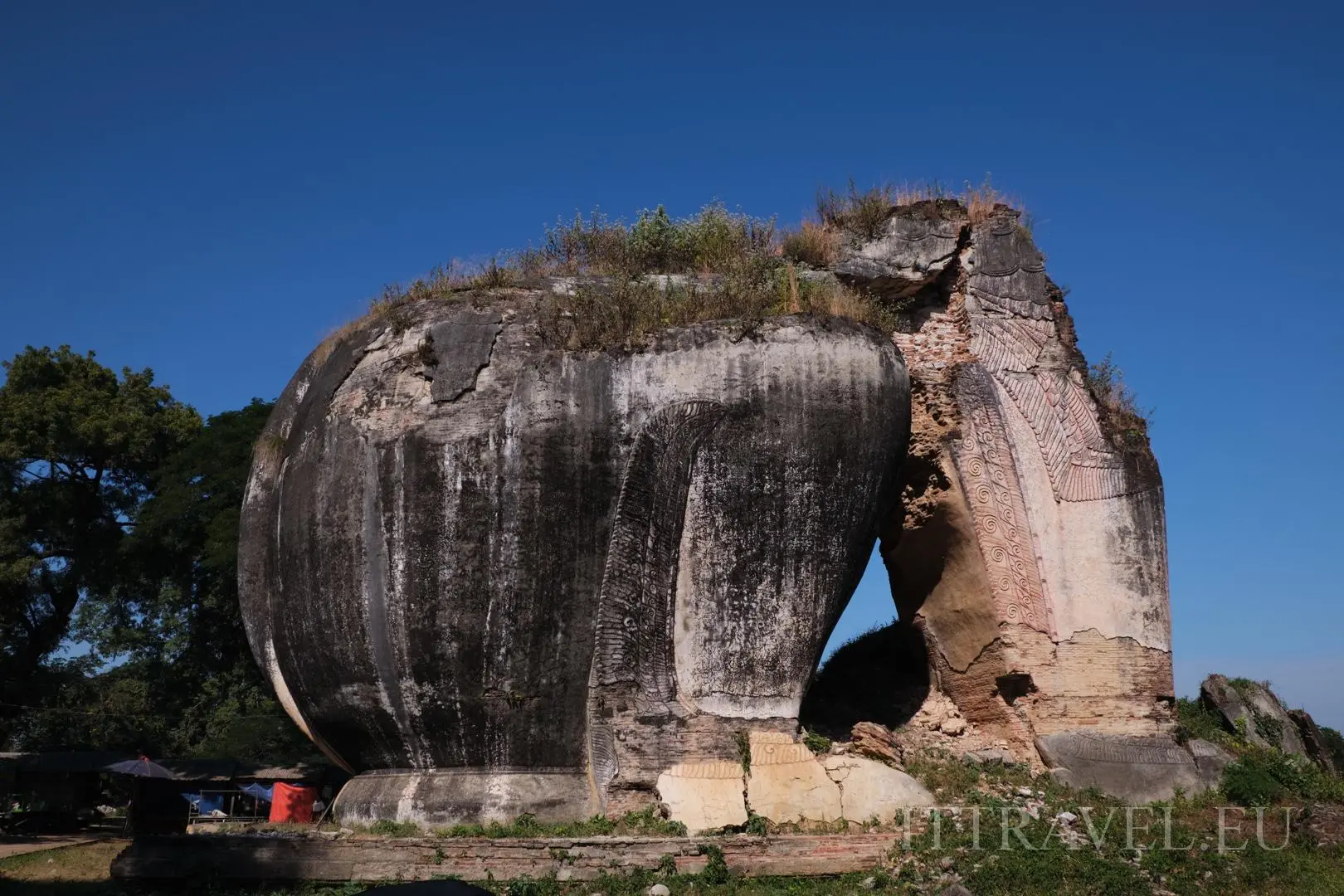
Mya Thein Tan Pagoda
It was built in 1816 by King Bagyidawa. It is devoted to his first wife and cousin! Princess Hsinbyume who died during childbirth. Appearance is a representation of the Sulamani pagoda from the mythical Meru mountain (which is considered to be the center of all the physical, metaphysical and spiritual universes in Hindu and Buddhist religion). The lower parts of the Pagoda represents the mountains.
Great place for nice photos!

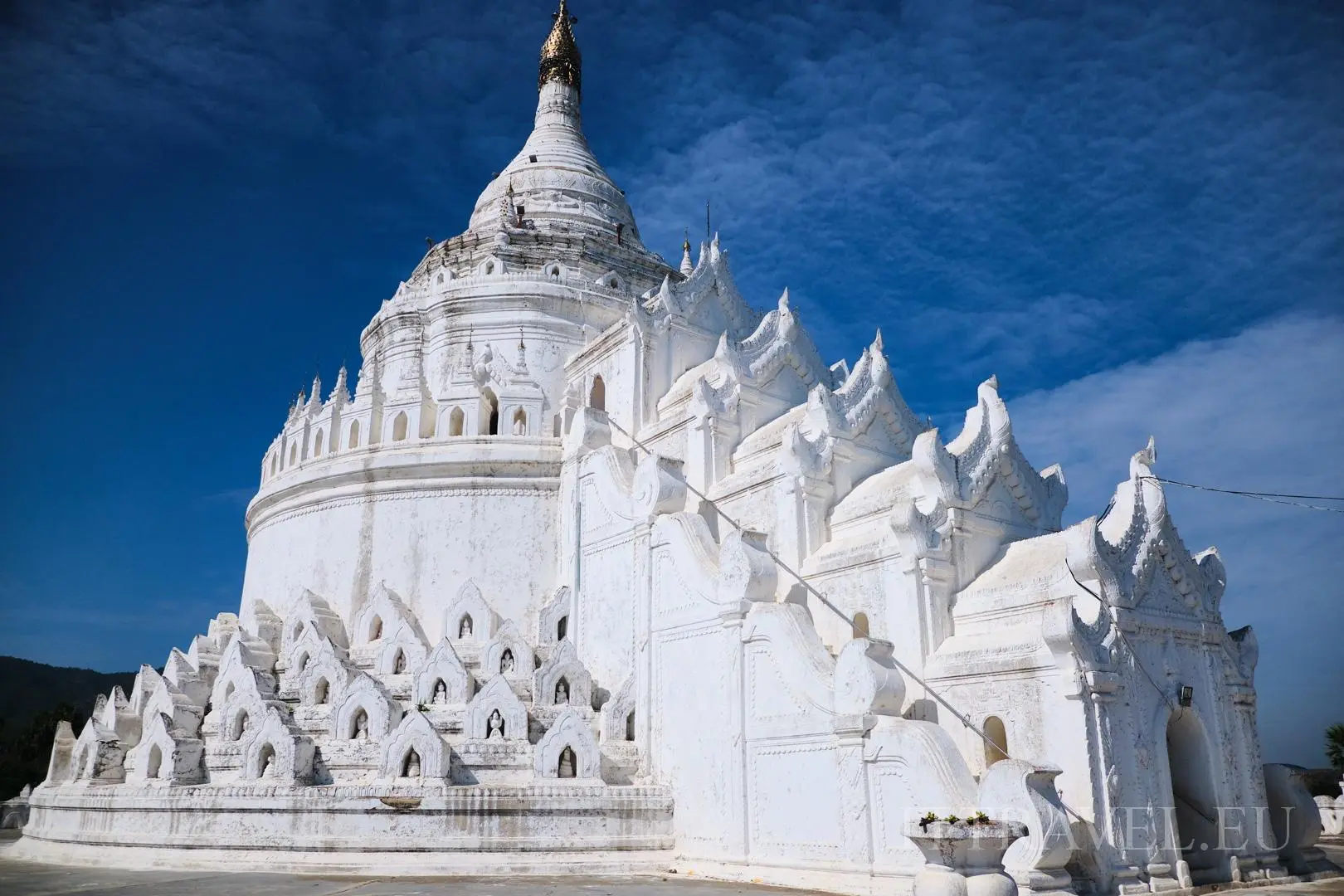
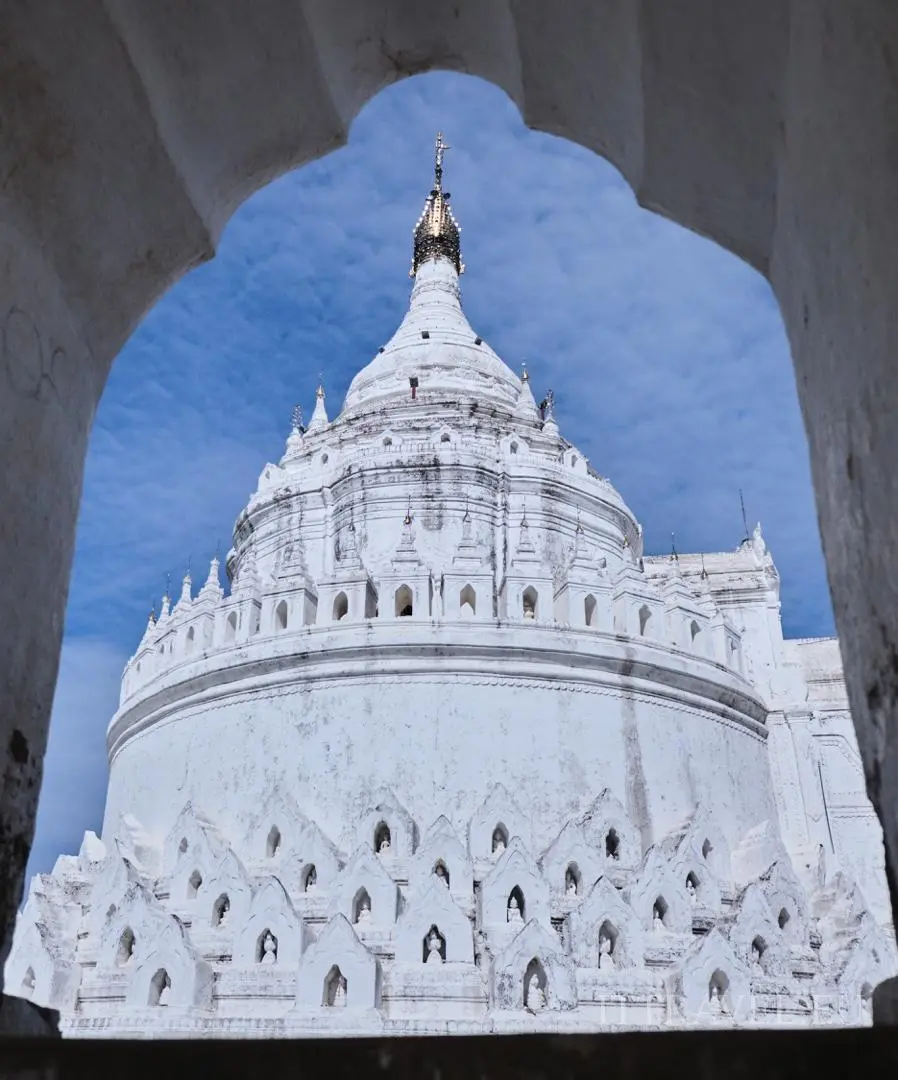
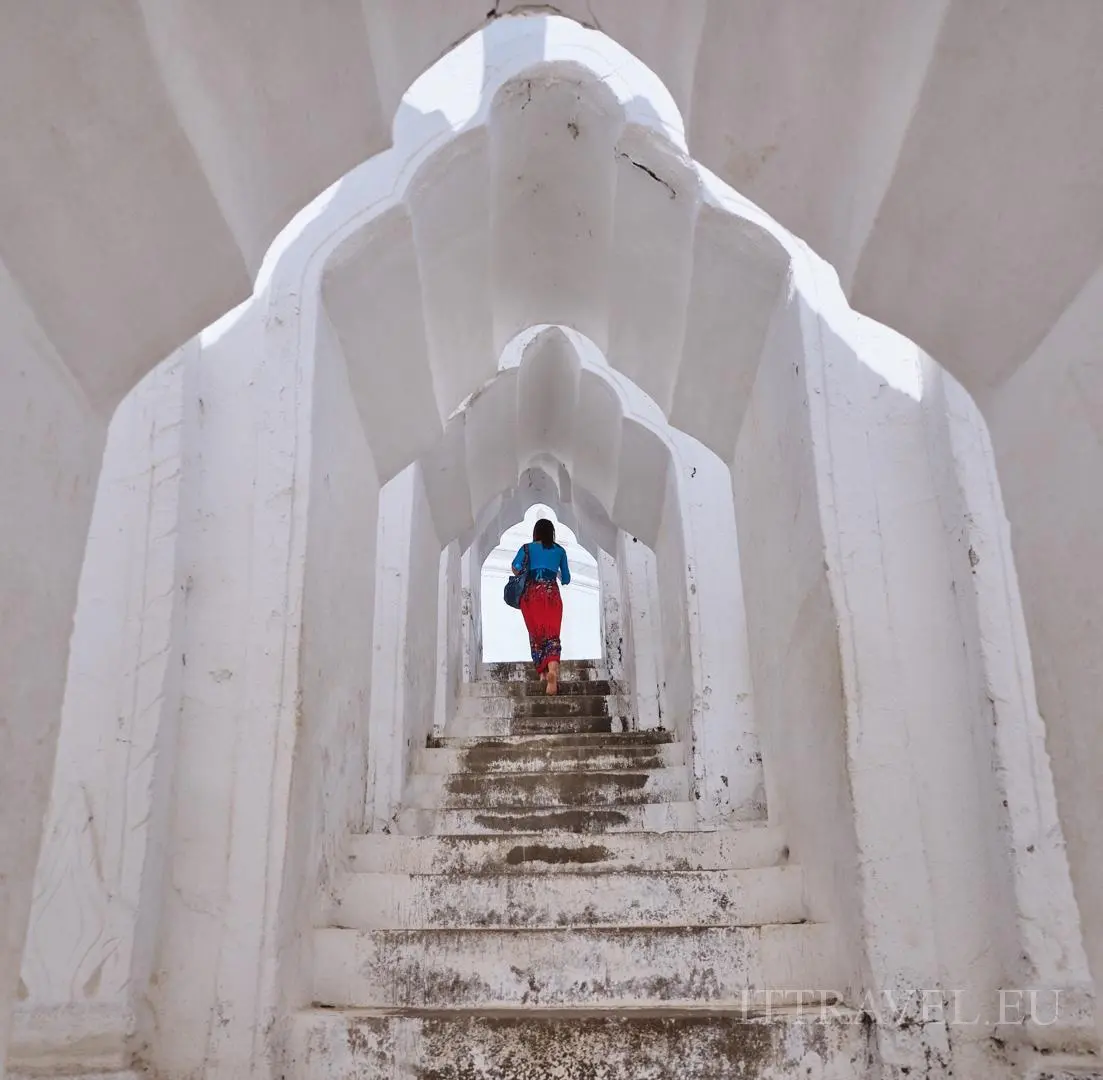
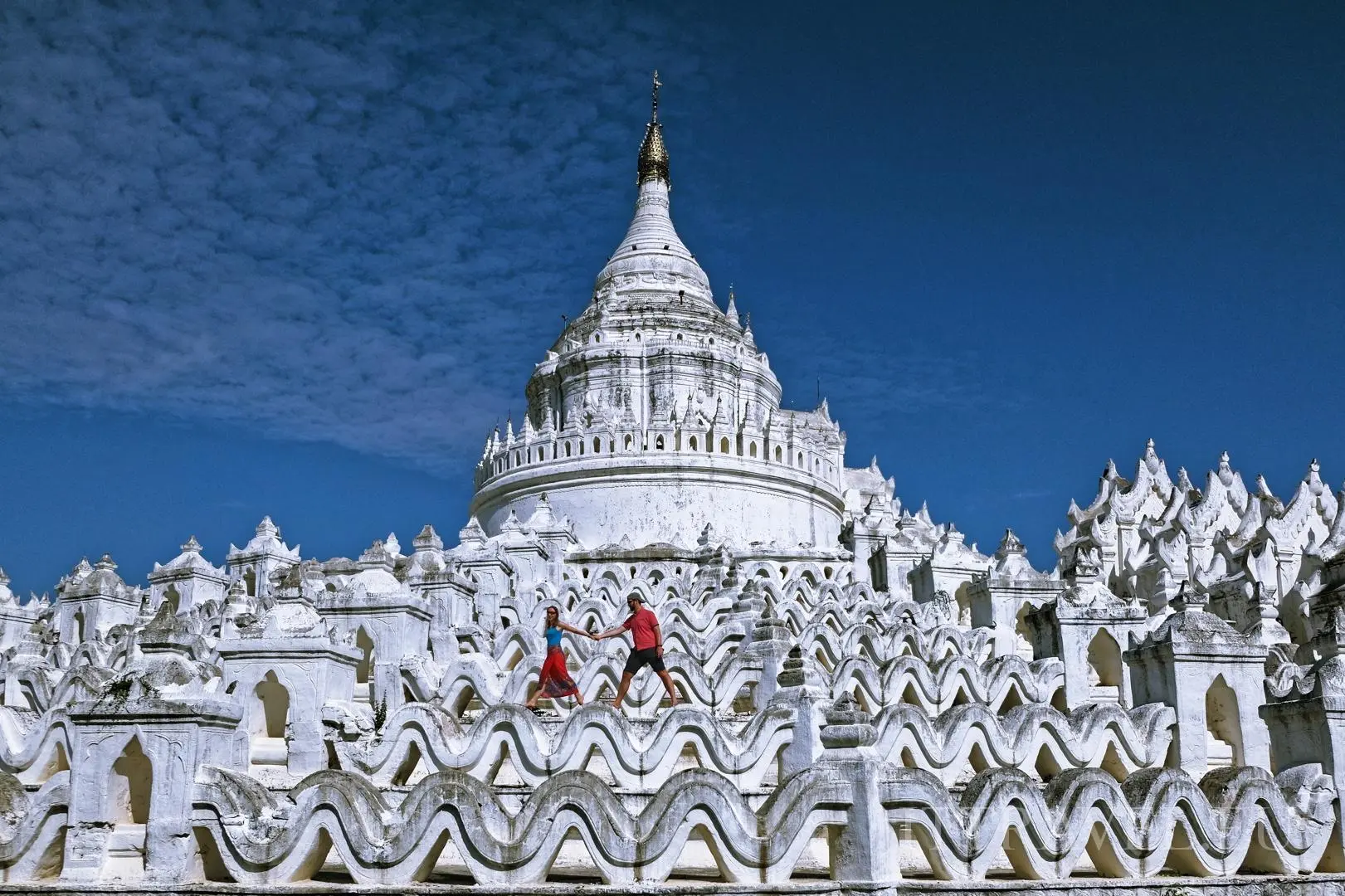
Saggaing Hills
They are covered with many Buddhist sacred objects. It's worth to visit not only because of the temples themselves, but also the beautiful view from them.
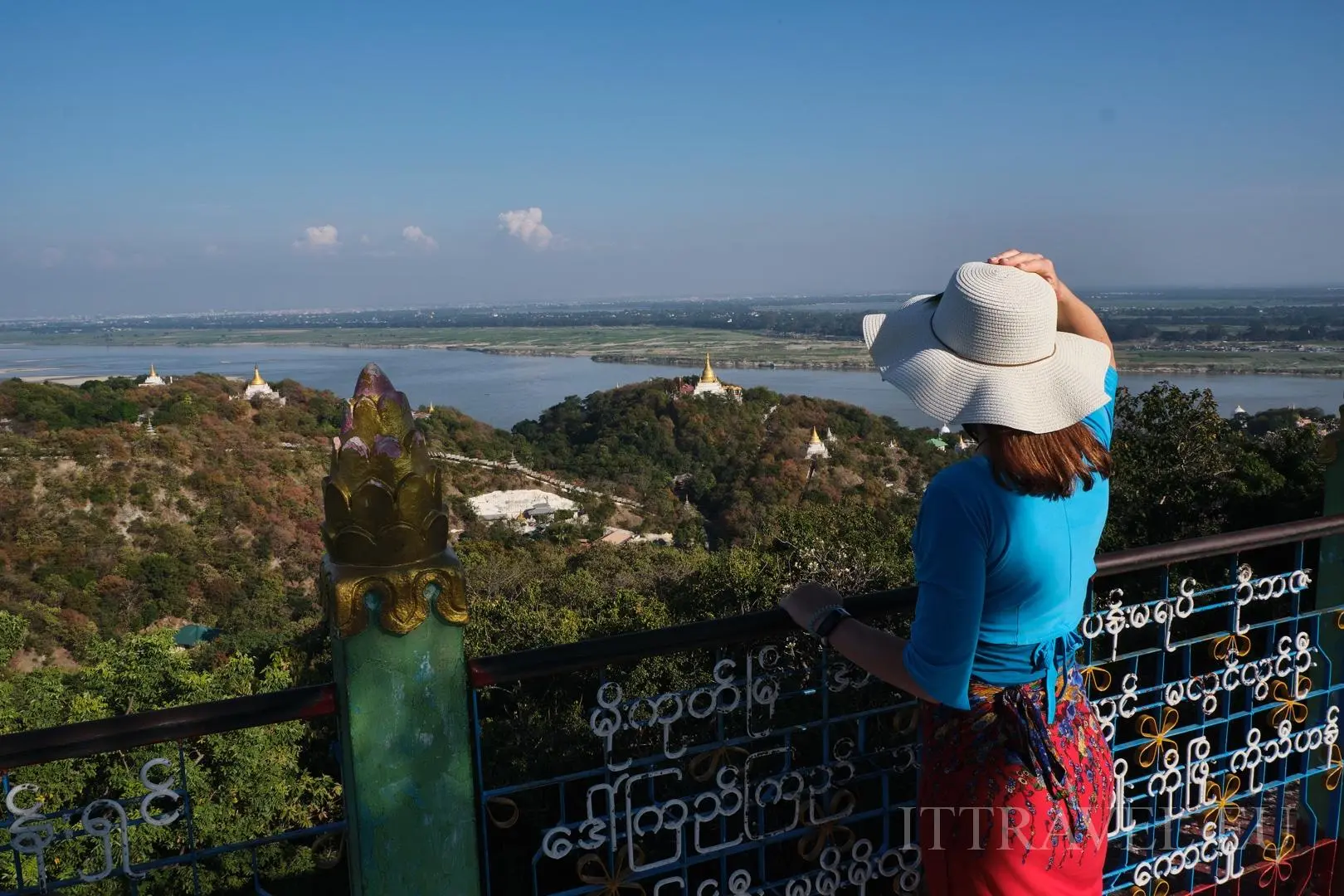
Soon Oo Pon Nya Shin Pagoda
Built in 1312 for minister Pon Nya, who also owes its name. It is very richly decorated. You have to pay 200 Kyats for scooter parking and 300 Kyats for the possibility of taking photos or films.
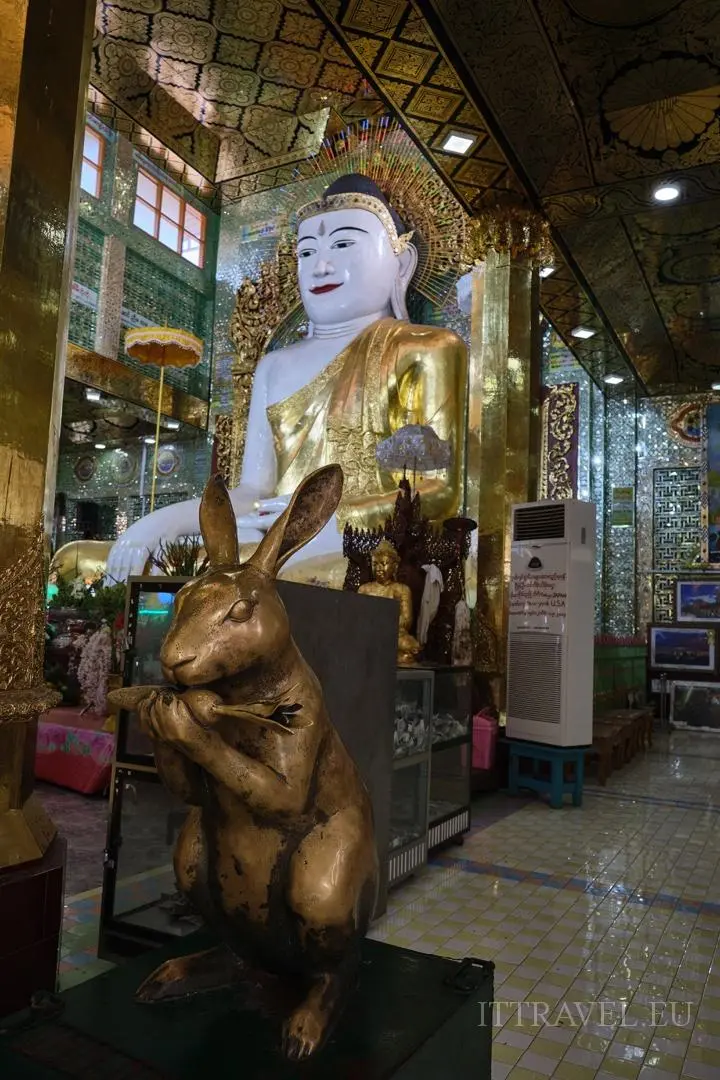
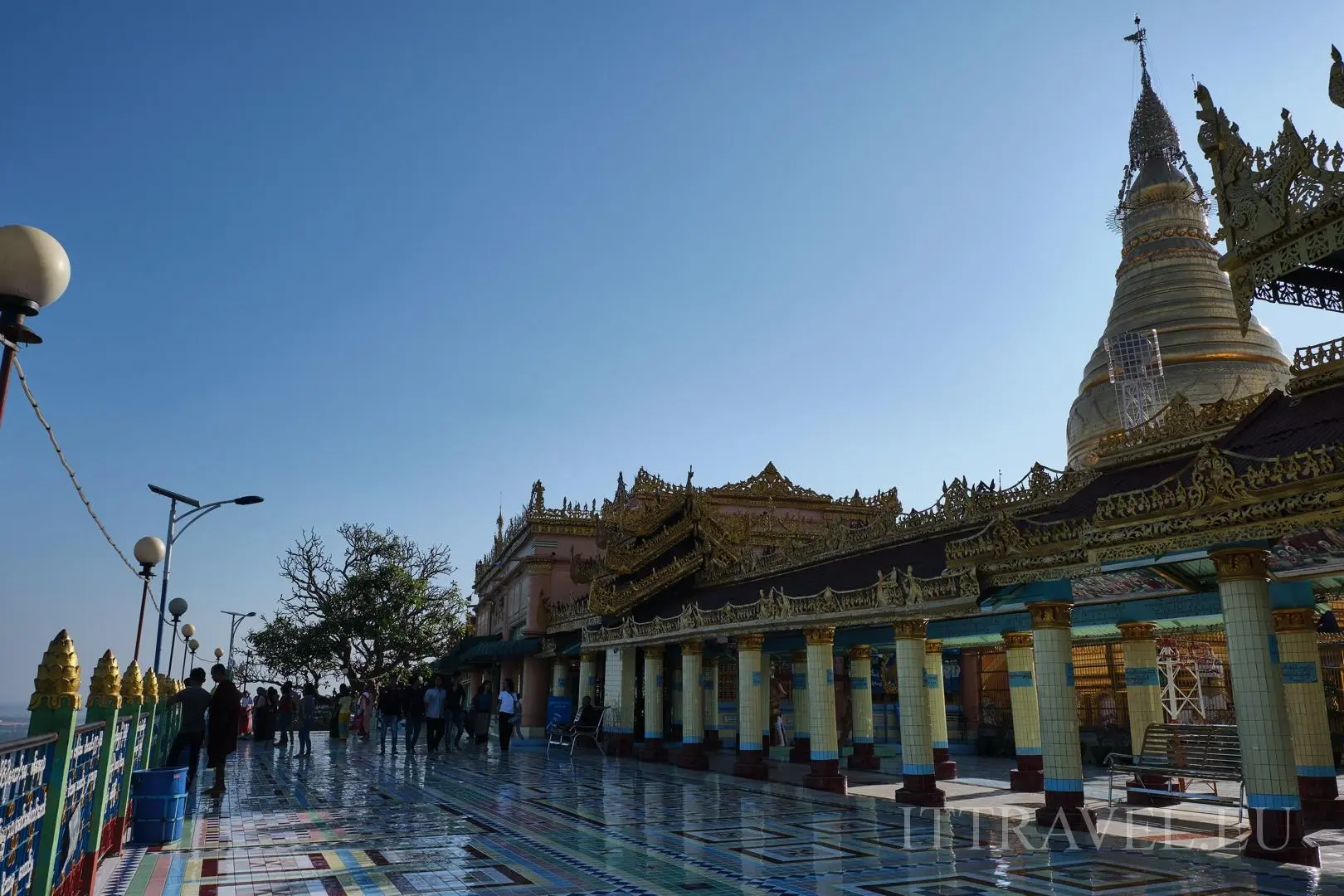
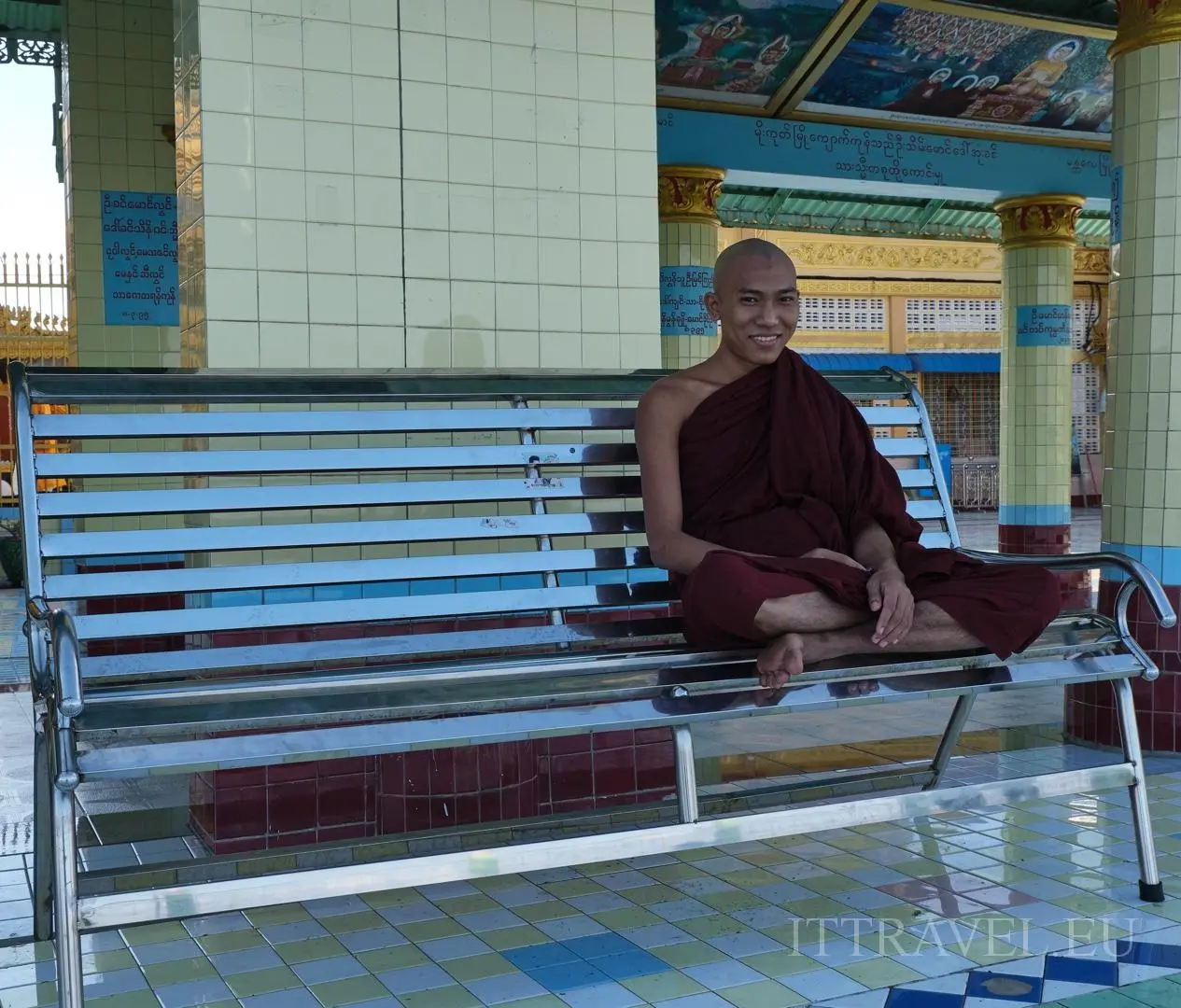
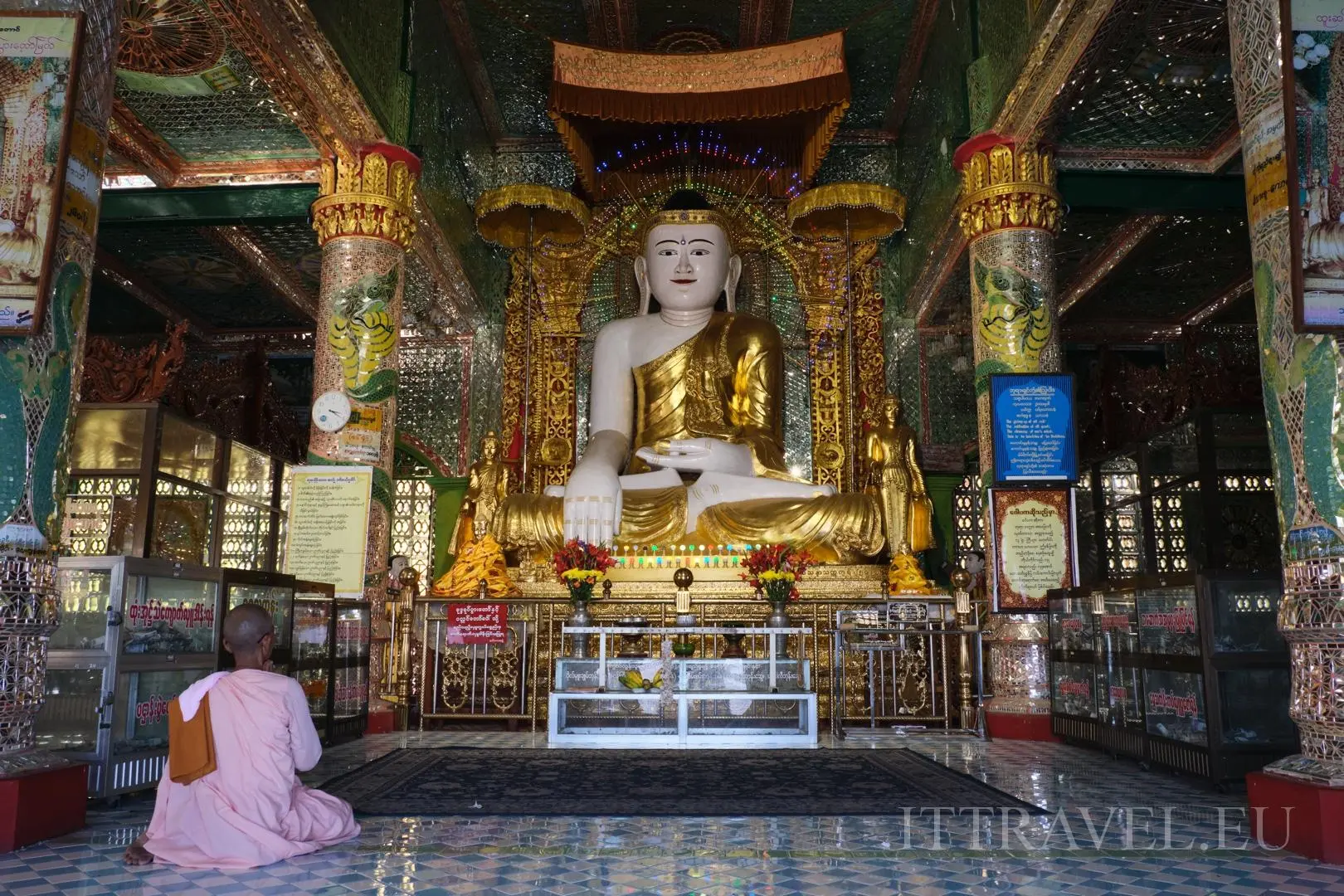
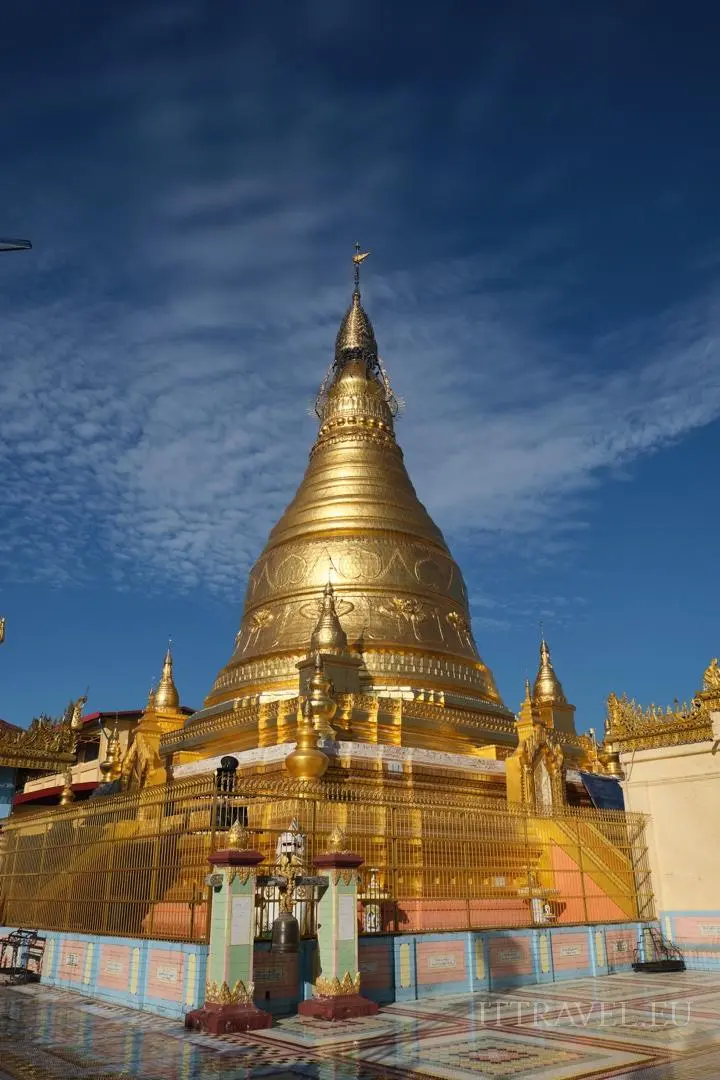
Umin Thonze Pagoda
Built in 1366 by Venerable Thing-Raz, who was the main teacher of the king. The name means a pagoda of thirty "caves" - which are actually thirty entries into the long hall containing 45 Buddha statues.
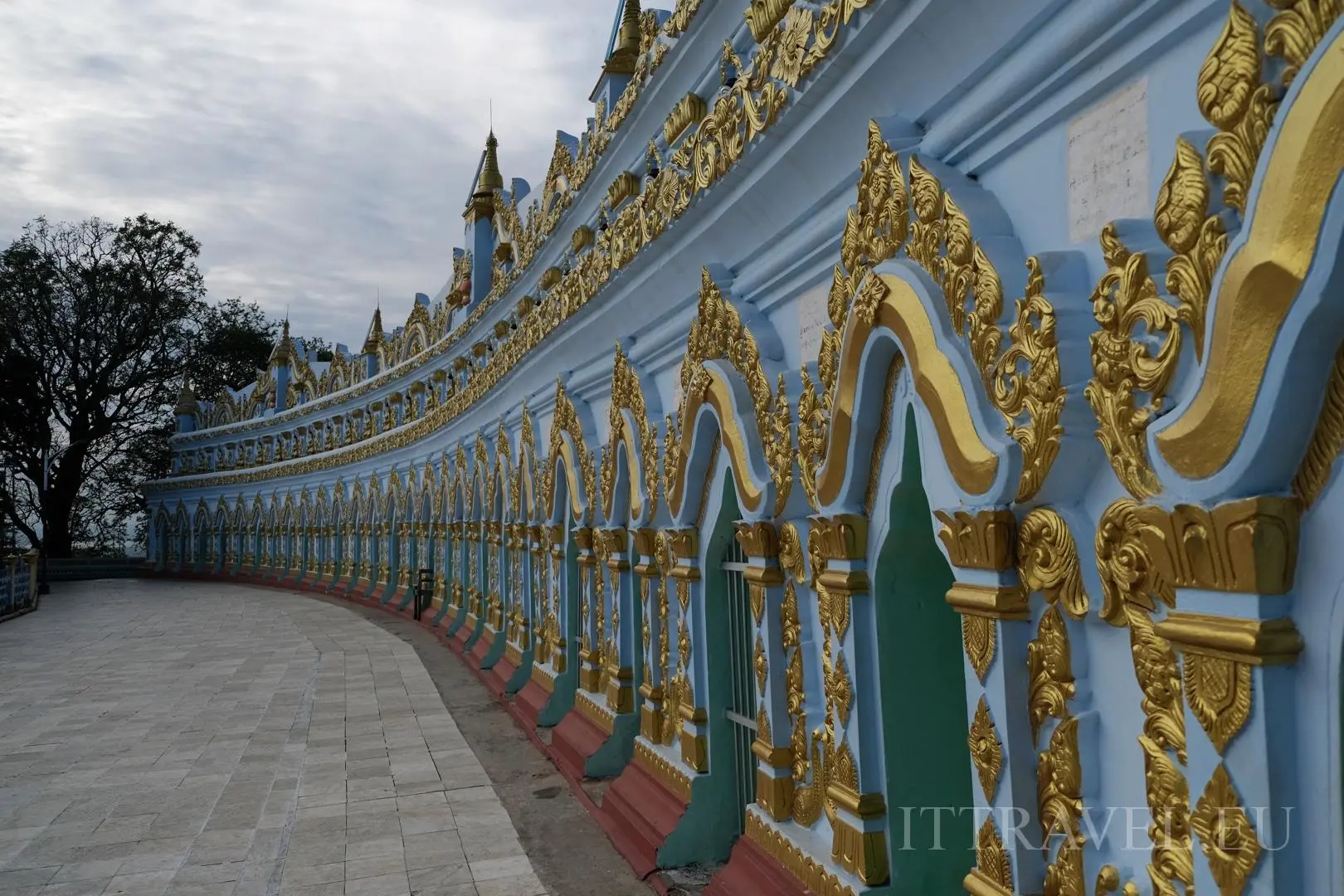
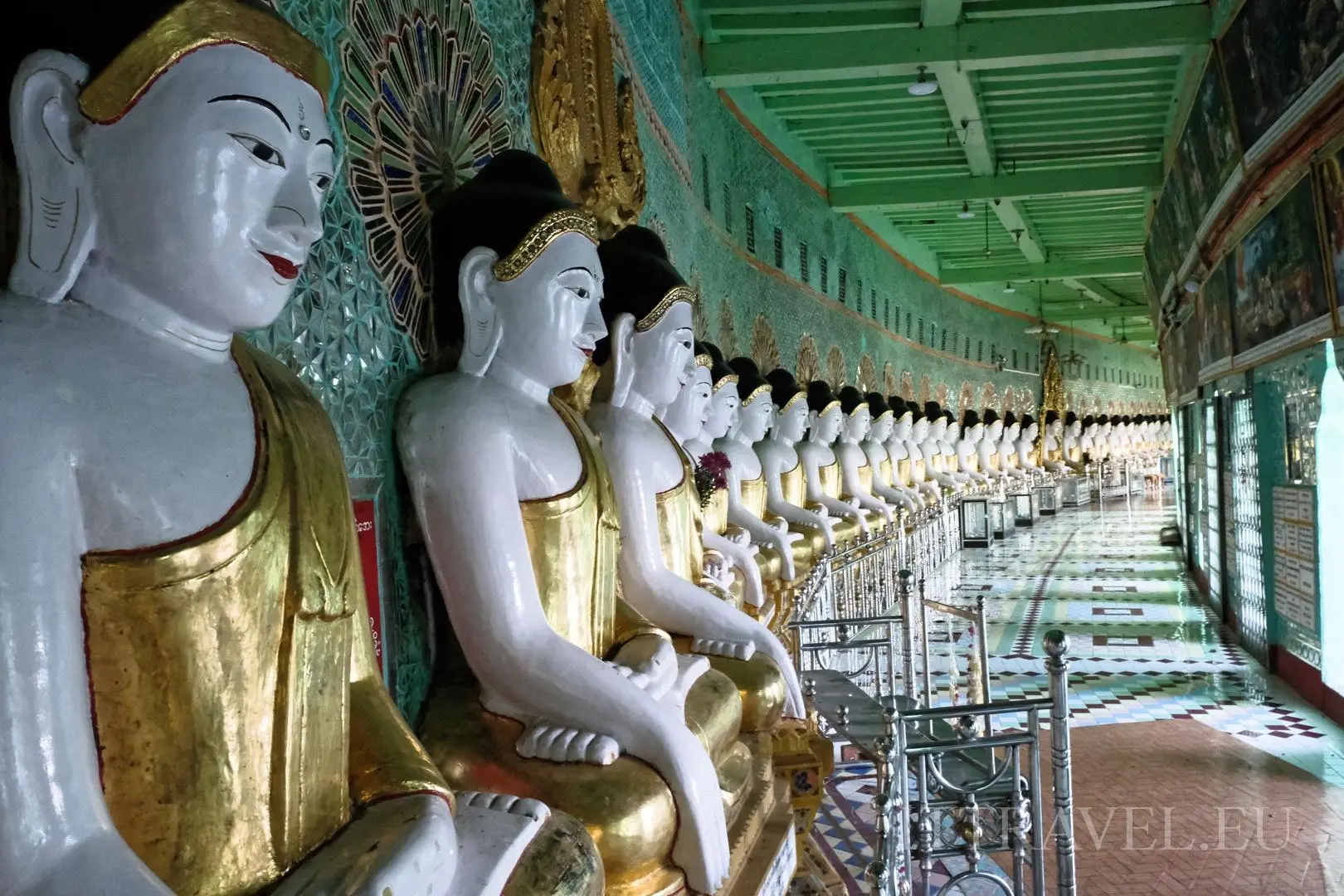
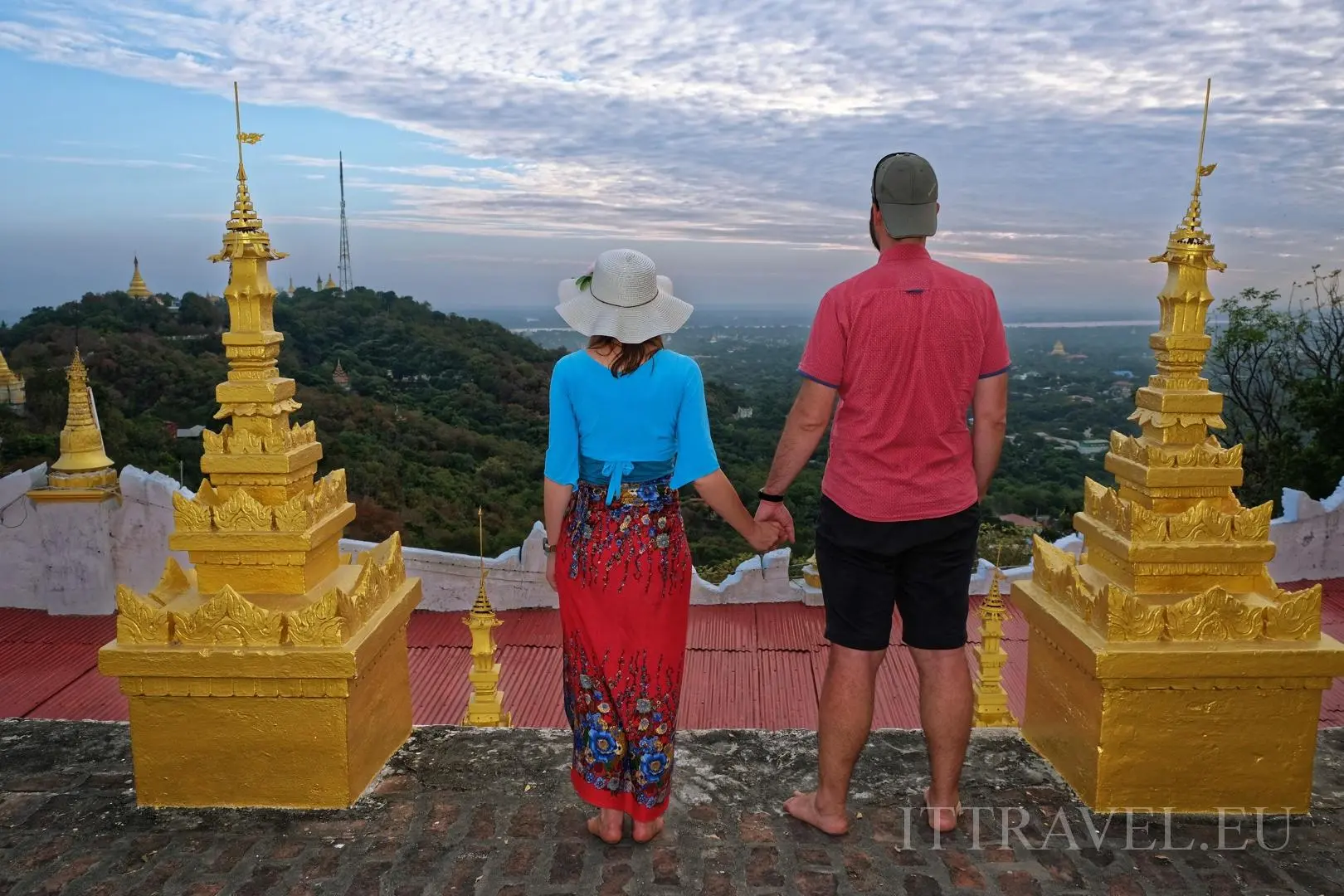
U Bein Bridge
One of the oldest and longest teak bridges in the world.Built between 1849 and 1851. It stretches for 1.2 km on Lake Taungthaman in Amarapura. The name comes from the mayor who ordered the construction. The bridge was built of wood recovered from the old palace of Inwa. It has 1086 supports, of which a large part has now been replaced with concrete. At sunset, there are huge crowds. It is popular not only among tourists but also local residents.
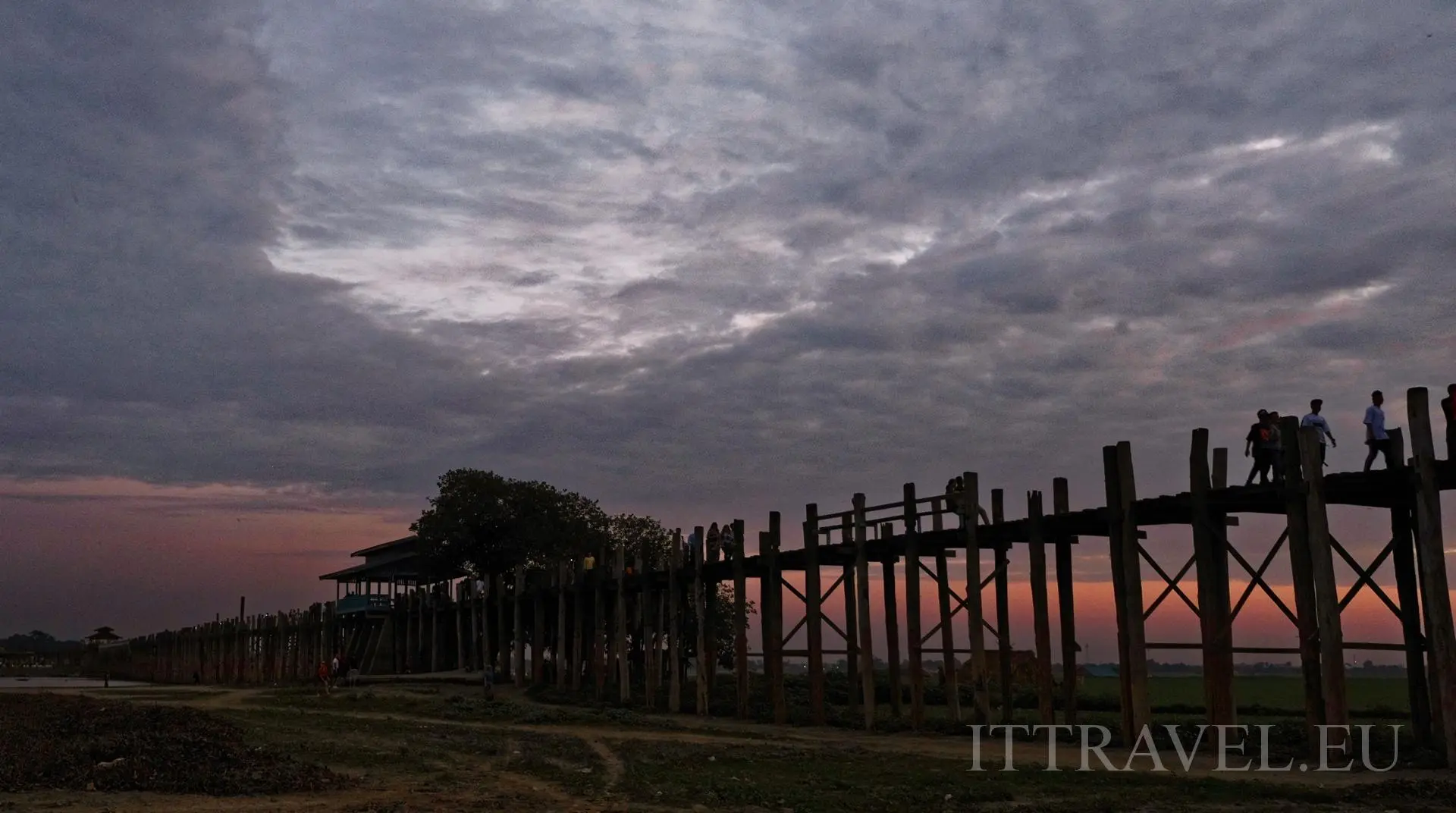
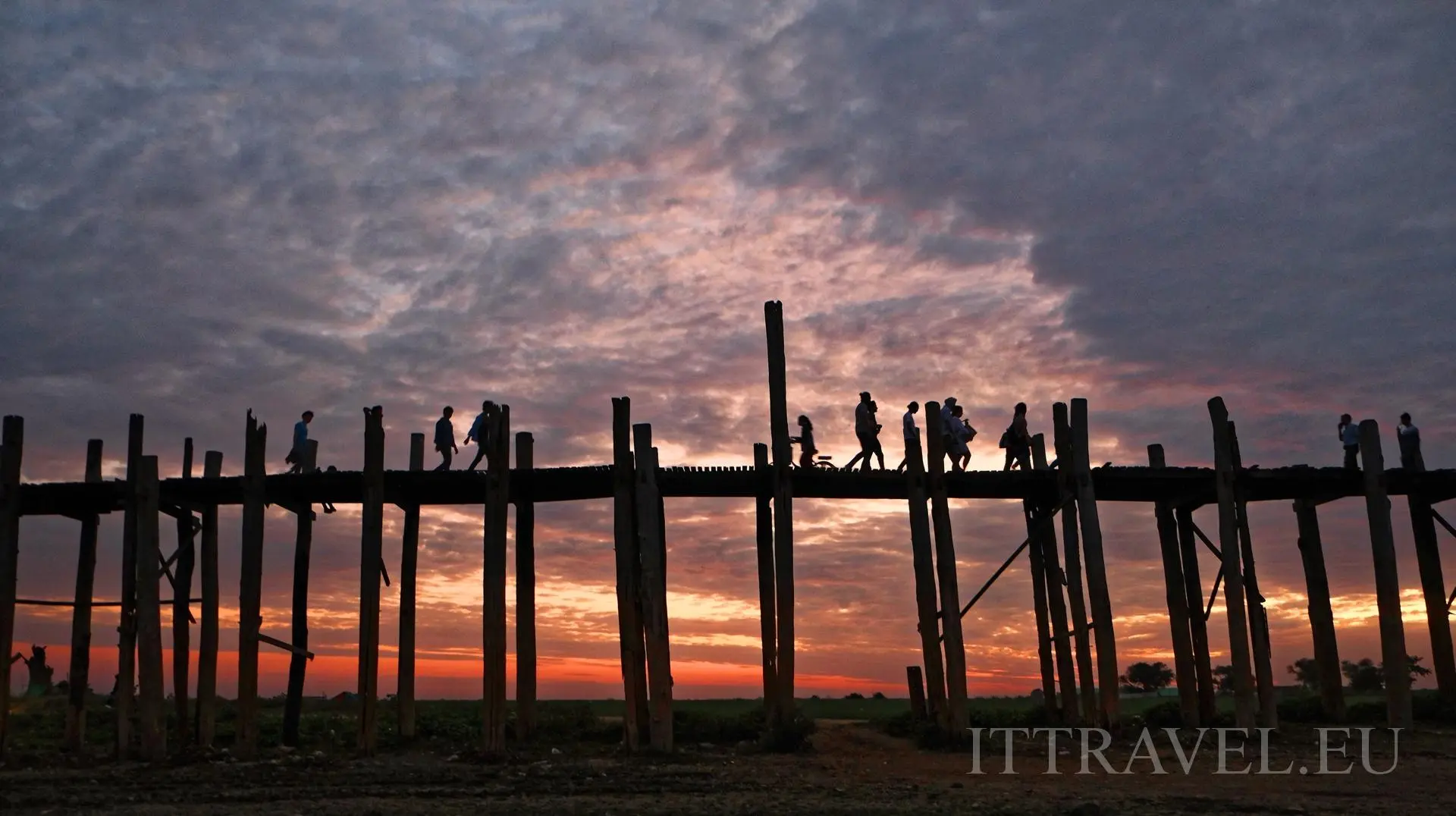
We could not see everything. Other recommended attractions are:
Moustache Brothers
A show presenting traditional Mayanmar dances mocking a military junta. It takes place every day from 20:30 - tickets 10,000 Kyats per person.
Maha Aung Mye Bon Zan Monastery
Founded in 1882 by Queen Me Nu. This is one of the first monasteries built mainly of brick, not wood. Every morning you can observe the procession of monks - students begging for alms - the group can count even several hundred people. Buddhist religion commands monks to live modestly and feed on what they get from the faithful. In return for support in the form of food, the monks offer spiritual support to the community. (Such scenes can be observed in many religious places.)
Bagaya Monastery
Originally built in 1593 on the orders of the city official Maha Thiri Zeya Thinkhaya. The wooden building burned down completely in 1821. Currently, we can see a brick reconstruction based on the model of the original building.
Jade market - Mahar Aung Myae Market
A large jade market. You can see stone preparation and trade there.
King Galon Gold Leaf Workshop
A workshop for the traditional preparation of gold leaves, which are then offered to the Buddha or used as a decoration or even a cosmetic.
Mahamuni Buddha Temple
An important pilgrimage center for Buddhists. The image of the Mahamuni Buddha is worshiped there - one of the most important in Myanmar.
Finally, a map prepared by us for downloading or for viewing: